
Being diagnosed with COPD can be a very frightening and disheartening experience. It's common to feel fear and apprehension about living with the diagnosis and maybe even guilt about what you did or didn't do that might have caused your COPD.
But the most important thing to understand about your COPD diagnosis is that, with an effective treatment plan and healthy lifestyle changes, you can take control and slow the progression of your disease.
According to the GOLD System (developed by the Global Initiative for Chronic Obstructive Lung Disease), COPD progresses through four typical stages, with Stage1 being the most mild and Stage 4 the most severe.
Based on your symptom severity and lung function tests (spirometry), your doctor will determine what stage your disease is at. GOLD also just released new guidelines that take your COPD assessment test score and your exacerbation history into account as well.
However, the most common practice used by doctors to classify stages of COPD is using your symptom severity and your lung function tests to determine your stage.
This article will introduce you to the 4 stages of COPD and what to expect at each point. We want to help you better understand your disease, your symptoms, and how to take care of yourself and stay as healthy as possible.
Some COPD patients feel helpless to control their disease, but the only way to slow COPD symptoms from worsening is to take a proactive role in your own health and treatment. With the help of their doctors and healthy lifestyle changes, many people with COPD live long, full, and active lives.
Take the COPD Athlete, Russel Winwood, for example. He has spent his life since his diagnosis living an extremely active lifestyle, and runs marathons and trains for triathlons despite having Stage 4 COPD.
He's used his own example to encourage others with COPD and other respiratory diseases to work hard and keep up hope. He is proof that you can maintain an active, high quality of living with enough effort and dedication.
And just because Russel is training for triathlons doesn't mean that's what you have to do to live a full and happy life. That's his passion and he doesn't let his COPD dictate his life. You can still follow your passion and live your life to the fullest too!
{{cta('fa8abc2a-1e88-4fa3-82fd-1cb5b9ed43b2','justifycenter')}}
Stage 1: Mild COPD
COPD stage 1 is the first, most mild stage of the disease. In fact, the symptoms are usually so mild that most people don't realize that they have a health problem. Typically people think their symptoms are just signs of aging or long-term smoking because the symptoms aren't debilitating. They just brush them under the rug.

Unfortunately, this means that many people ignore the early symptoms of COPD and wait too long to go see a doctor. These are some of the warning signs that you might have COPD:
- Constantly short of breath after simple tasks
- Changes in the consistency and color of your mucus
- Chronic cough for no apparent reason
- Have a hard time breathing while laying down
If you experience any of these warning signs, it's important not to brush off mild respiratory ailments and see a doctor for advice as soon as possible. Catching the disease early is key so that you have time to take medications and make healthy lifestyle changes to prevent it from worsening.
At stage 1, COPD is still very treatable, so it's important to take advantage of all the available treatments and make lasting lifestyle changes. It's especially important to stay active and exercise regularly while your symptoms are still mild.
Stage 1 COPD Symptoms
COPD is often the last thing people consider when they have respiratory issues, but it's important to pay attention to your symptoms and consider any warning signs you might have.

If you are or have been a smoker, have been exposed to lung irritants at home or work, or have had heavy exposure to other chemicals or pollutants, you need to be especially vigilant.
Here are the most common symptoms of Stage 1 COPD:
- Slight airflow limitations
- Chronic cough and/or wheezing
- More mucus/sputum production in airways
- Fatigue (you notice that you get tired more easily than usual)
- FEV1 Value of at least 80% of normal (Your FEV1 is a measure of the amount of air you can exhale in 1 second)
As you can see, stage 1 COPD symptoms are easy to mistake for a benign condition like allergies, the common cold, or a natural part of aging. COPD can be tricky that way, and that's why it's important to take these symptoms seriously and talk to a doctor as soon as possible. Especially if your symptoms are persistent.
Stage 1 COPD Treatment Options
If you've been given a stage 1 diagnosis, you have a huge advantage when it comes to slowing the progression of your disease. The best time to diagnose COPD is at stage 1, because there is still plenty of time to make healthy lifestyle changes and you are still living a fairly normal and active life.
At stage 1, symptoms are usually very mild and most treatment options focus on prevention of further symptoms. By developing healthy lifestyle habits like eating clean, exercising regularly, and being social while also closely monitoring your symptoms, you will have a much easier time managing your COPD and slowing its progression.

While COPD is not curable, it is very treatable. Your disease will likely progress to a later stage, but early treatment can greatly slow the disease's progression. These are some of the recommended treatment options for stage 1 COPD.
Quit Smoking
If you are a smoker, then the number one, most important important thing you can do to treat your COPD is to quit. As soon as you get your COPD diagnosis, you should seek out and utilize whatever smoking cessation resources are available to you.
Quitting smoking is certainly not easy, but if you have COPD, it's the only way to prevent your health from rapidly declining. If you don't quit immediately, you will almost certainly see your symptoms get quickly and permanently more severe.
Don't be afraid to ask for help. Talk to your doctor about smoking cessation medications, and enlist your friends and family for support. There are even government and state programs that will give you nicotine patches or gum for free by signing up for their program.
But I'm not going to beat a dead horse here... There are so many articles on quitting smoking and I'm sure you've heard all of the tips more than once.
I will leave you with one little piece of advice that might not be listed. Join Facebook support groups. You will be able to connect with people who are going through the same battle as you and people who have successfully quit so you have numerous people to rely on for support.
Avoid Lung Irritants
Quitting smoking is one part of avoiding lung irritants, but there are other chemicals and air conditions that you should also avoid if you have COPD.
If you have allergies, you already know that it can affect your airways and ability to breathe. But dust and pollution are lung irritants as well, and you should avoid them to prevent your COPD symptoms from flaring up.

Even if you don't notice your symptoms getting worse from dust and smog, they could still be causing damage to your lungs and should be avoided. The more total exposure you have to these lung irritants, the more quickly your disease will progress.
Key lung irritants to avoid:
- Air pollution and smog
- Dust (consider using an air filter or dust mask in places you might be exposed)
- Pollen (if you have allergies)
- Chemicals found in household (and industrial) cleaning products
- Strong perfume or cologne (including other scented products like lotions and shampoos)
- Smoke (including secondhand smoke, incense, burning wood, etc.)
- Aerosols (like air fresheners and disinfectants)
- Extreme weather conditions (extreme heat, extreme cold, and humidity)
Healthy Diet & Nutrition
It's important to start making changes to your diet as soon as you get your diagnosis, because it can do wonders for your overall health. And when you have COPD, it's especially important to keep your body in the best possible shape.
Your doctor will help you work out a diet that's tailored to your needs, depending on your age, current diet, disease stage, and other factors. Make sure not to make any major, sudden changes to your diet without consulting your doctor first.
Here are some foods that are healthy for people with COPD:
- Choose lean proteins (chicken, fish, turkey)
- Eat plenty of fruits and vegetables
- Eat whole grains and avoid processed foods
- Take necessary vitamins and supplements as recommended by your doctor
- Drink plenty of water and avoid sugary drinks (like soda and fruit juices)
These are recommendations that any healthy adult, not just people with COPD, should follow. But as someone with COPD, it's especially important for you to avoid unhealthy foods and give your body the proper nutrition it needs.
Here are some foods that are not healthy for people with COPD:
- Fried and processed foods (e.g. fast food, processed snacks, and processed meats)
- Caffeinated and sugary beverages
- Foods high in salt
- Foods that cause heartburn or acid reflux
- Nitrates and sulfites
- Alcoholic beverages (they can slow your breathing rate)
Get More Physical Activity
Developing good exercise habits as soon as possible is extremely important if you have COPD. The longer you wait, the worse your symptoms will get. If you can build good exercise habits while you're still at stage 1—when symptoms are still mild—it will be easier to remain physically activity as time goes on.
If you wait until a later stage, you'll find that the worsened symptoms like coughing, wheezing, and restricted airways make it especially difficult to stick with an exercise routine. It will be even worse if you haven't ever been very active before.
Even though you might feel winded and have difficulty breathing at times, it will get easier as you build strength. But it's important that you don't over do it. If you feel like you can't keep going, that's okay. Just keep trying and your whole body will feel stronger and healthier. Not to mention, you'll have more energy and endurance.

Not only is exercise good for you overall, regular cardiovascular activity can actually strengthen the muscles around your lungs. This can help lessen your COPD symptoms, making it easier to breathe.
Here are some of the benefits you can get from following an exercise plan with COPD:
- Improved circulation and oxygen delivery throughout your body
- Improved oxygen efficiency (your lungs won't have to work as hard to deliver enough oxygen)
- Stronger muscles around your lungs
- A boost to your immune system
- More energy and endurance
Get Vaccinated
People with COPD are more prone to complications when they get sick with the flu or other viruses. Getting a respiratory illness could lead to exacerbations of existing symptoms.
Vaccinations won't help reduce any of the symptoms you already have, but it can help keep them from getting worse. A bad flu can cause COPD troubles to flare up and linger, sometimes causing a permanent worsening of symptoms.
Since COPD patients have a higher risk of complications and hospitalizations, it's especially important that they protect themselves from respiratory illnesses like Pneumonia and the flu. By keeping up with your yearly vaccinations, you'll have an extra layer of protection against this risk.
Short-Acting Bronchodilators
At stage 1, there is usually minimal, if any, medication required to control symptoms. Breathing issues are usually mild, and long-term medication is not usually necessary.
That said, the first prescription medication most people with COPD get is one for a short-acting bronchodilator. This kind of inhaler is meant to be used on-demand, when you need temporary relief from mild symptoms.
Short-acting bronchodilators contain a medication that relaxes the muscles around your lungs and makes it easier to breathe. Most doctors will instruct you to use them as needed when your symptoms flare up.
Here are a couple examples of short-acting bronchodilator medications:
- Anticholinergics (e.g. ipratropium)
- Beta 2-agonists (e.g. albuerol or levalbuterol)
- Sometimes your doctor will prescribe a combination of two short-acting bronchodilators
Overview of Stage 1
While a COPD diagnosis is never good news, if you're diagnosed at stage 1, you are luckier than most with the disease. You still have many viable treatment options ahead of you and the opportunity to improve your overall health before your symptoms worsen.
Little, if any, medication is needed at stage 1, and your treatment plan will likely focus on preventative maintenance and healthy habits like diet and exercise. It's also important to avoid environmental irritants like secondhand smoke, household chemicals, and prolonged exposure to allergens.
You can greatly improve your symptoms and prognosis if you stop smoking, develop healthy eating habits, avoid lung irritants, and get more physical activity right away. Building these skills early on is key for maintaining a good quality of life with COPD.
Stage 2: Moderate COPD
At stage 2 of the disease, COPD symptoms become more pronounced and new symptoms may appear. This is the stage that many people start to notice their breathing difficulties and decide to seek help from a doctor.
At this point, lung function has declined further than stage 1, and the signs of COPD are more obvious. At this point, patients might be prescribed longer-lasting medications to deal with chronic symptoms and might be referred to a COPD support program to better learn how to manage their disease.

Stage 2 COPD Symptoms
With stage 2 COPD, you will notice symptoms that are more noticeable and more persistent than they were at stage 1. You might also notice some new symptoms, like chronic breathlessness or difficulty coughing up mucous.
Here are the symptoms characteristic of Stage 2 COPD:
- Worsening airflow restriction
- Worsening breathlessness, especially after heavy activity
- Increased mucous and phlegm in airways
- Persistent, chronic coughing
- Difficulty expelling phlegm from lungs
- FEV1 Value of 50-79% of normal
Whereas you might have been able to brush off your symptoms at stage 1, at stage 2 they often become too obvious to ignore. It's important to seek treatment from a medical professional knowledgeable about COPD in order to properly manage your symptoms.
Treatment Options
At stage 2, you will have all of the treatment options that were available at stage 1 plus more. You are likely to need some kind of medication to help with your symptoms.
Even if you are already using short-acting bronchodilators, your doctor might prescribe you a more long-term medication to help with chronic symptoms.
If you are having difficulty exercising and managing your symptoms, your doctor might also refer you to pulmonary rehab to help you get a jump-start on healthier habits.
Pulmonary Rehabilitation
Many doctors suggest pulmonary rehabilitation to patients who have difficulty managing their symptoms and changing their diet and exercise routines.
However, pulmonary rehab programs are a good idea for anyone diagnosed with COPD, as they encompass a variety of educational, psychological, and physical activity programs to help people with respiratory conditions.

Pulmonary rehabilitation programs are like a COPD boot camp, and attending one is a great way to kick-start your treatment. They are run by qualified therapists and health professionals who can help you learn and practice healthy habits.
Pulmonary Rehab: Education
It's important to know as much as you can about your disease so you can take an active role in managing it. Pulmonary rehabilitation programs put a strong focus on helping people understand COPD and respiratory health so they can make more informed and healthy decisions.
Unlike a regular health lecture, lessons from pulmonary rehab are tailored to be practical and relevant to YOU. After all, it would be tragic if your symptoms worsened or your disease progressed because you didn't have the information you need to understand and manage COPD.
A good pulmonary rehabilitation program will teach you everything you need to know about your disease and how to manage it, so you have everything you need to keep your COPD in check. What's more, you will also receive counseling on how to manage your disease emotionally and stay motivated to follow your treatment plan in the face of adversity.
Here are some topics that you can learn more about in pulmonary rehab:
- How to cope with your illness
- How to seek support from doctors, family, and friends
- How to keep up and comply with your treatment plan
- Exercises and techniques for better breathing
- Physical activities that are particularly helpful for people with COPD
- Techniques for how, when, and how often to use your inhaler
Once you complete a pulmonary rehabilitation program, the knowledge you've gained will give you a solid foundation for living with COPD.
Pulmonary Rehab: Diet and Exercise
Maintaining a healthy diet and getting enough physical activity is the most important part of managing COPD. That's one thing that pulmonary rehabilitation programs are good for—helping you to understand what proper nutrition and exercise looks like when you have COPD.
It will help you understand not only what kind of exercises to do and how often to do them, but also the reasons and theory behind why they will help you. It's much easier to stay motivated and stick with a healthy routine when you understand why it's beneficial, instead of just doing it because someone told you to.

Here are some things you can learn about diet and exercise in pulmonary rehab:
- What regular activity and exercise should look likelihood
- Why regular exercise is important, and how it will help your COPD
- Breathing techniques to make physical activity easier
- Foods and drinks that can worsen COPD symptoms
- Tips for planning and preparing healthy meals
- And much more!
Pulmonary Rehab: Support Groups
One thing you can't underestimate when you have a chronic illness is the power of a support system. Having people around you to help and support you as you manage your COPD can help you stay motivated and hopeful.
&
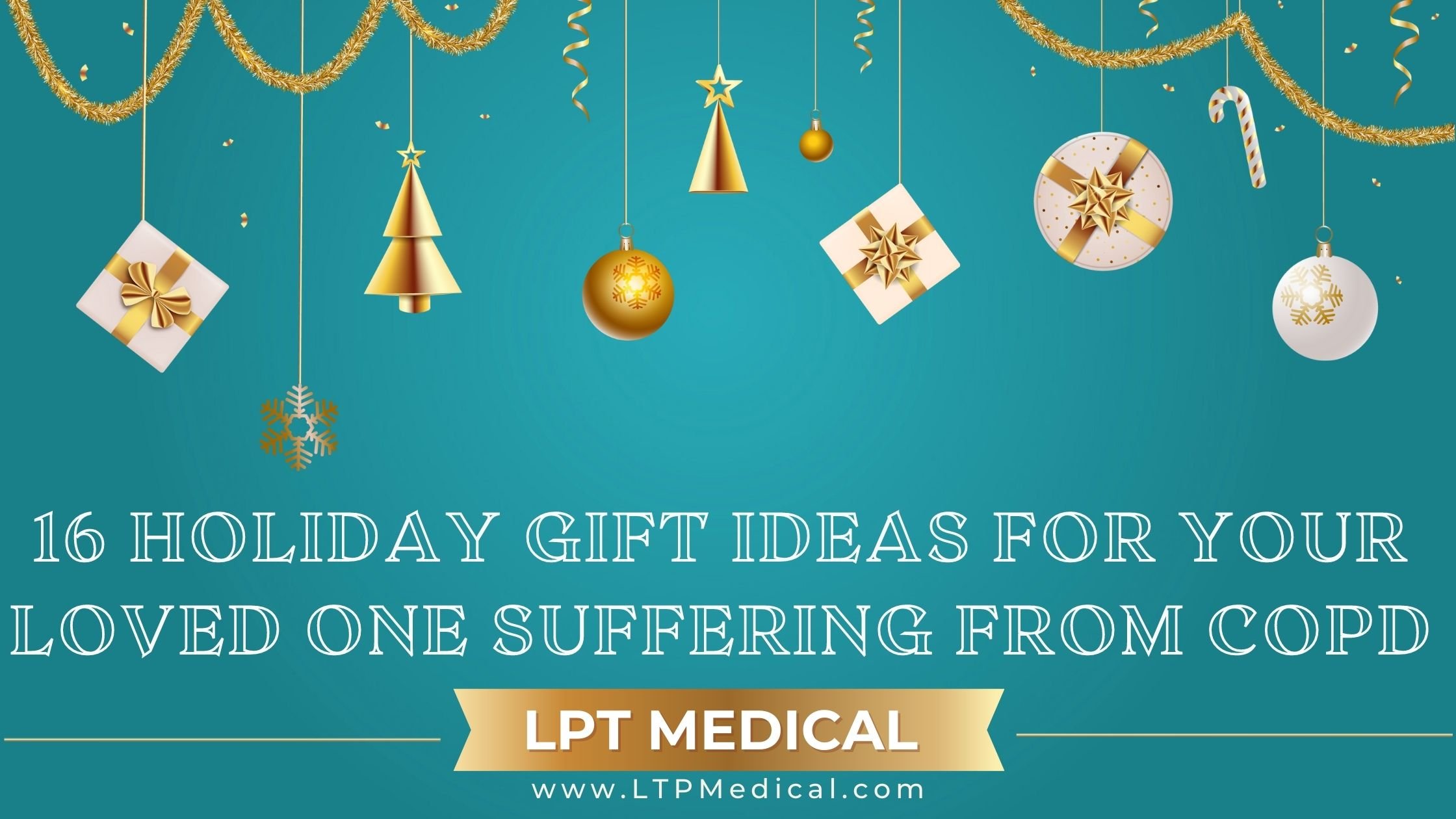
The holidays and shopping for friends or family with COPD can be difficult. But you know what's more difficult? Living with COPD every day of the year, and especially in the cold winter months!
Gifts can bring a lot of joy to the holiday, but special gifts picked out specifically for your loved ones with chronic respiratory diseases can bring joy that lasts throughout the year! Below are 16 practical Christmas gift ideas that COPD patients may find useful!
{{cta('fa8abc2a-1e88-4fa3-82fd-1cb5b9ed43b2','justifycenter')}}
So, while the gifts laid out in this article are practical and very useful for COPD patients, always remember that COPD patients may want something lighthearted, fun, that brings an element of the holiday spirit.
Exercise Bike
Exercise is an essential part of treating COPD. Exercise gives COPD patients hope for rebuilding strength and enjoying a fuller, more active life.
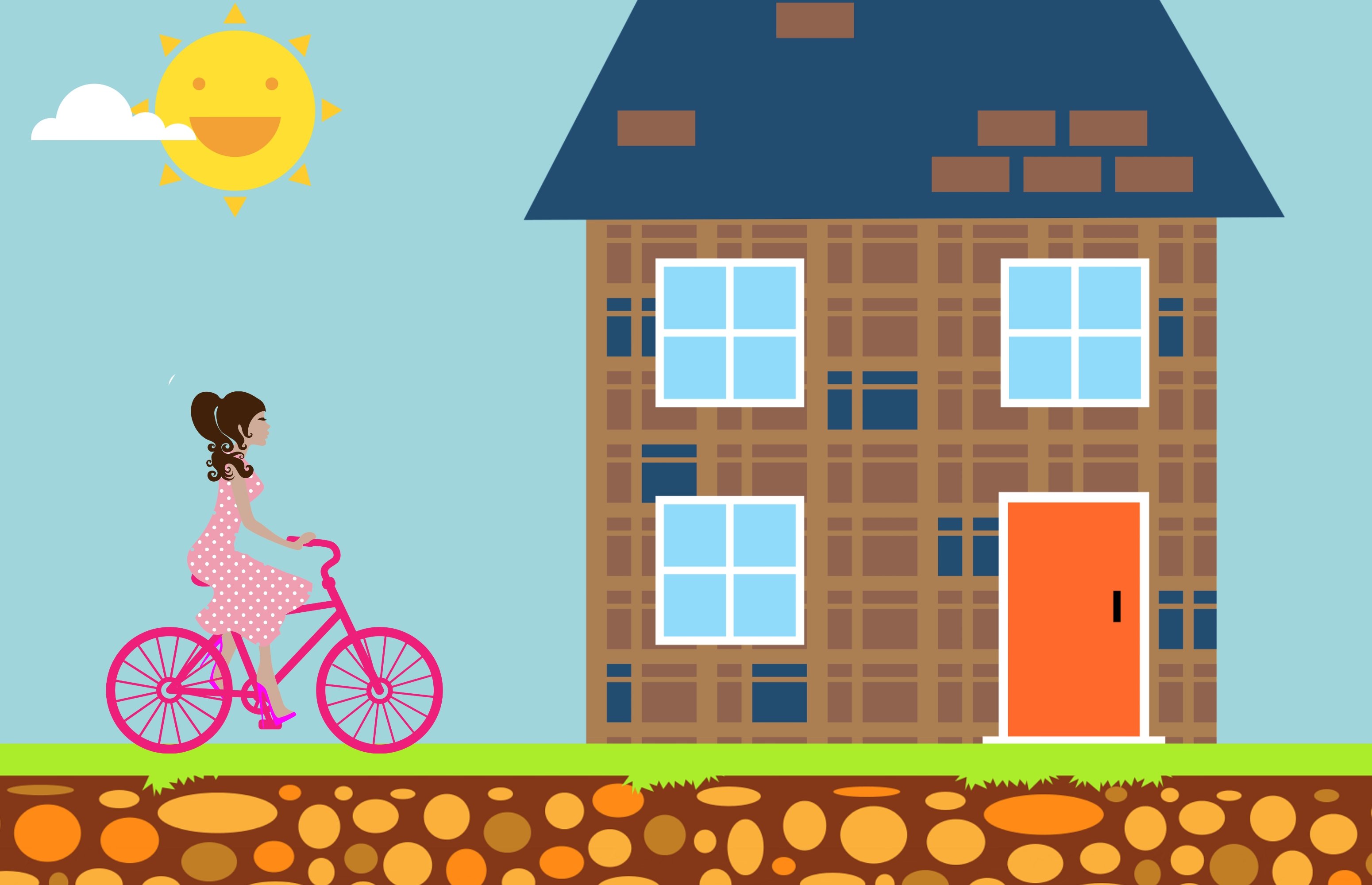
Pulmonary rehabilitation programs typically combine education, exercise training, nutrition advice and counseling, but for some people pulmonary rehab classes are not an option!
An exercise bike is a great option for low impact exercise that you can do from the comfort of your own home.
Nothing is more important to the person who has COPD than exercise. Exercise ultimately makes it easier for those with COPD to breathe by strengthening muscles, bones, and lungs.
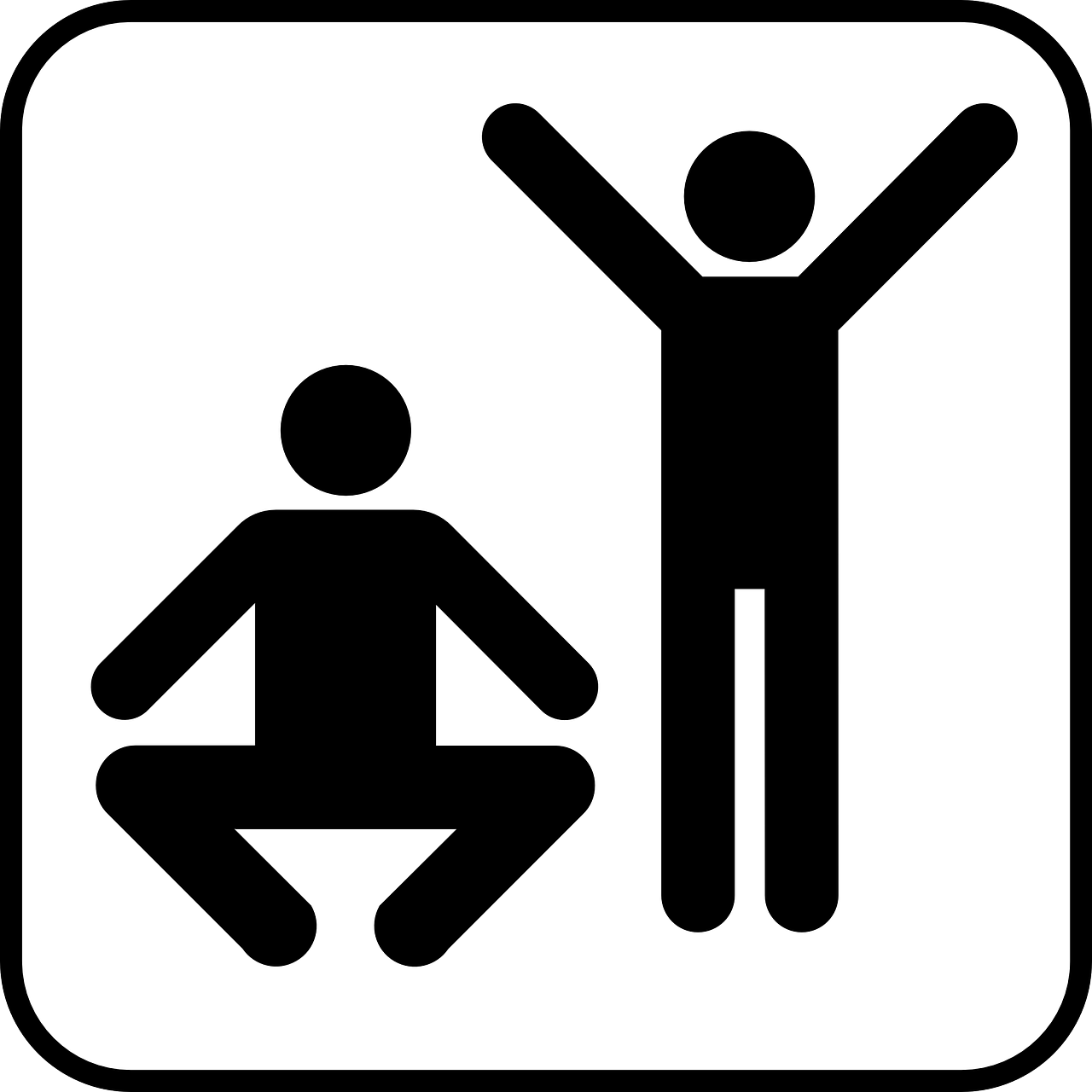
An exercise bike is something that will be valued by your loved one for years to come.
A tip for purchasing an exercise bike for a loved one is to choose a model that has several levels of resistance and a smooth magnetic resistance system so it can meet any COPD patient's needs.
Hat, Scarf and Glove Set

The cold winter months are a challenging time of year for COPD patients who already struggle to get around.
Staying warm is especially important for someone with COP. Breathing in cold air can ignite a bronchospasm and shortness of breath, causing a nasty flare up.
![]()
A scarf, hat and glove set will help your loved ones stay warm when they go outside and reduce the likelihood of them experiencing an exacerbation due to the cold air.
There are face masks designed for people with COPD that you can also buy. They are less fashionable, but offer a ventilation system that warms and moisturizes the cold dry air they are breathing in while outside!
Oxygen Therapy Gifts
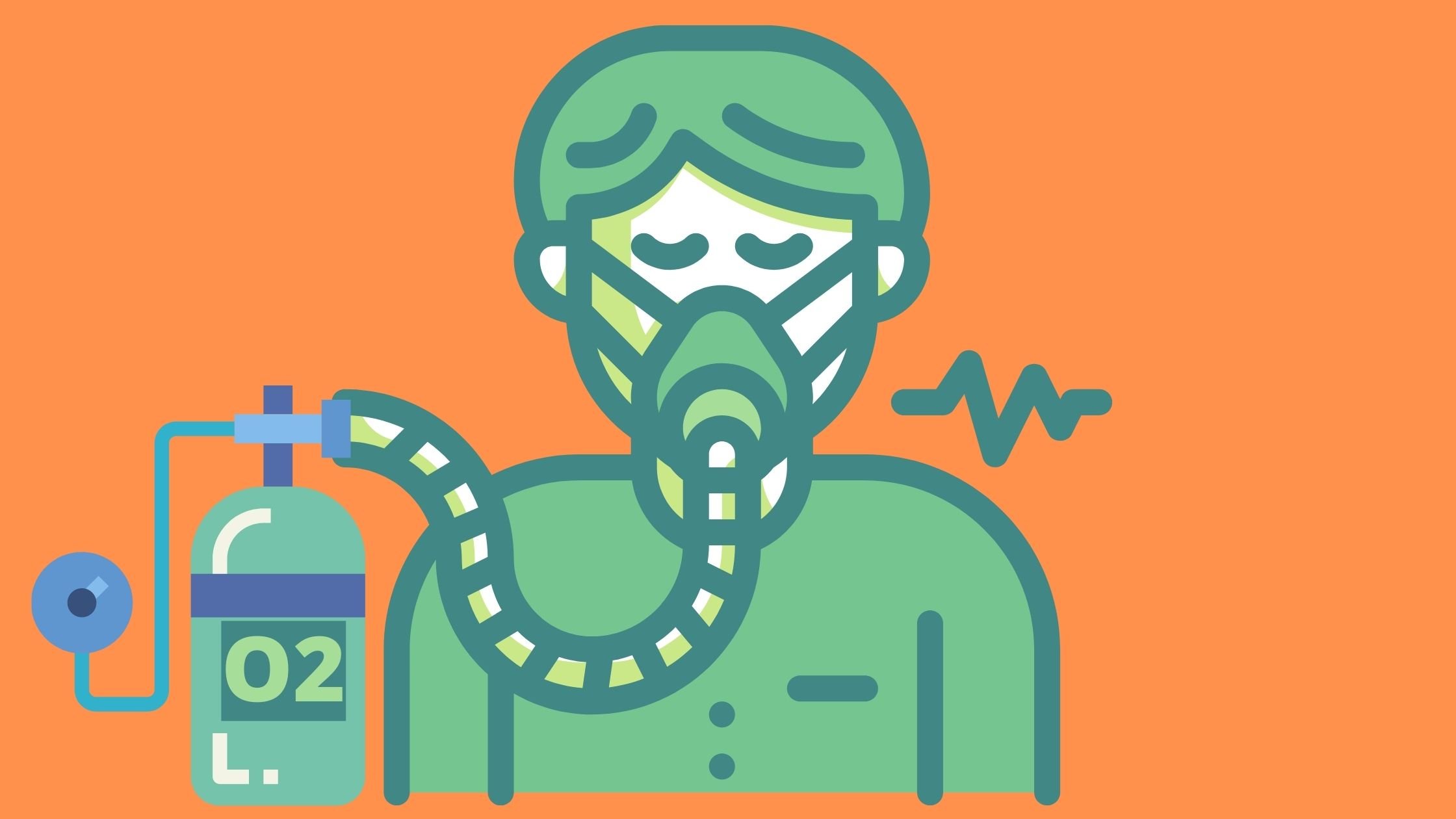
If you are looking for a gift for a love one who uses oxygen therapy here are some ideas:
A New Pulse Flow or Continuous Flow Portable Oxygen Device
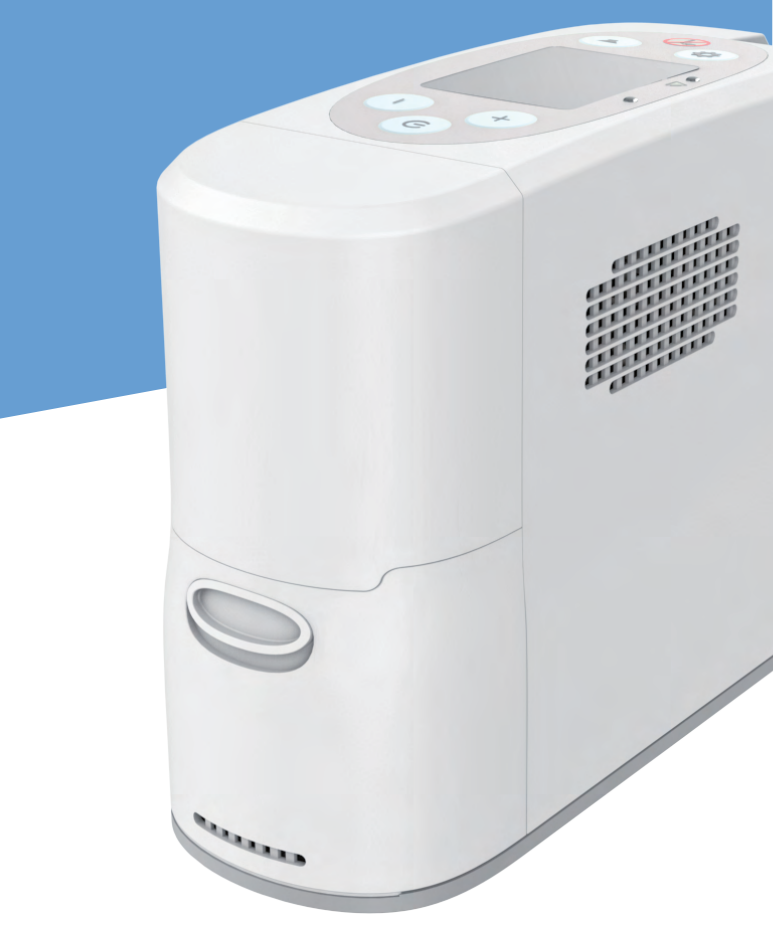
Pulse flow options:
Caire Freestyle Comfort
The Caire Freestyle Comfort is a pulse flow portable oxygen concentrator capable of delivering medical grade oxygen to COPD patients via face or nose cannula.
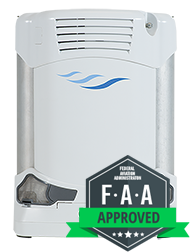
When you order the Freestyle Comfort from LPT Medical you are not only getting the portable oxygen concentrator, it will come with some additional accessories that will help your loved one make the most out of their oxygen therapy device, as well as a 3-year warranty!
Portable oxygen concentrators run off battery power, and the Caire FreeStyle comes with the 8-cell Lithium-Ion rechargeable battery. If you want a more powerful battery, you have the option to get the large Caire FreeStyle 16-cell battery.
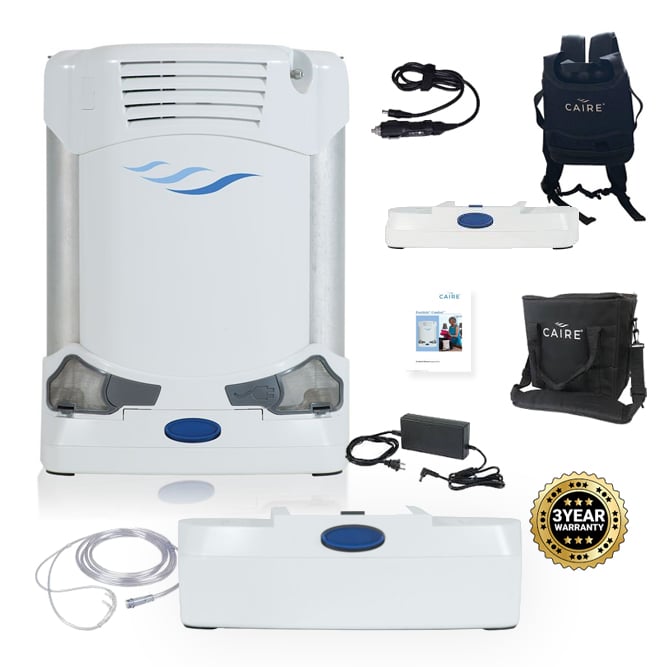
You will also get an AC adapter and the DC car adapter, which allows you to charge your device in a traditional wall outlet, or in the car using the cigarette lighter.
If you want another way to charge your device, you can purchase the Caire Freestyle external battery charger separately. With the external charger, you can keep your batteries charged no matter where you are in the world.

When you buy a Caire FreeStyle Comfort, you will also receive the Caire FreeStyle custom carrying case that comes with a convenient shoulder strap. You can also opt for another carrying method with the Caire Freestyle comfort backpack, this way you have several options to choose from when you carry your device with you.
With the purchase of the Caire FreeStyle Comfort, you will receive:
- 8-Cell Battery
- AC Charging Cable
- DC Charging Cable
- Caire Freestyle Custom Carrying Case
- Tubing
- Filter
- Manual
- 3 year-long warranty
Lifestyle P2
The Lifestyle P2 from Rhythm is one of the smallest and lightest units on the market. At 4.37 pounds, it offers pulse settings 1-5 and gets up to 5 hours of battery life.

Rhythm products, specifically their Lifestyle P2 portable oxygen concentrator, is not only built to keep oxygen users safe, comfortable, and independent, it is also a source of guidance and education.
Lifestyle Mobility Aids exists with a simple mission— to take care of people with medical needs, including those with respiratory issues that need supplemental oxygen to survive.
What Comes With the P2 Rhythm Portable Oxygen Concentrator?
- P2 Rhythm Portable Oxygen Concentrator
- AC Power Supply
- DC Power Supply
- Rechargeable Battery
- Protective Carrying Case
- Shoulder Strap
- Tubing
- Filter
- Manual
- 3 year Warranty
Inogen One G5
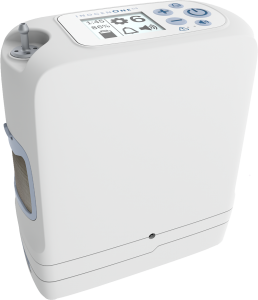
Medical oxygen tanks can be restrictive and oftentimes people sacrifice their freedom to hang out with friends or visit with family on your terms due to their oxygen device.
Help your loved one get back to doing what they love, ditch those cumbersome oxygen tanks and order the brand new Inogen One G5 portable oxygen concentrator.
Instead of worrying about refilling your oxygen tanks, the Inogen One G5 restores your mobility thanks to its portable delivery of pulse flow settings of 1-6, which is powered by a rechargeable lithium-ion battery.
Plus, if you’re familiar with the Inogen family of medical oxygen concentrators, the Inogen One G3 offers incredible battery life in combination with a compact and lightweight design. Well, the Inogen One G5 portable oxygen concentrator is lighter and offers a longer battery life than the Inogen One G3.
What Comes With Your Inogen One G5:
- Inogen One G5 Portable Oxygen Concentrator
- Single Battery
- AC Power Supply
- DC Power Supply
- Custom Carrying Case
- Shoulder Strap
- Tubing
- Manual
- 3 Year Warranty
Continuous flow options:
Respironics SimplyGo
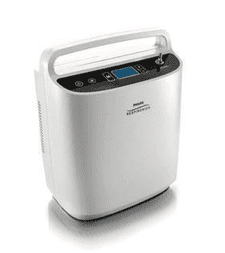
Philips Respironics broke the stereotypical design for continuous flow portable oxygen concentrators when they released the Respironics SimplyGo.
Ever since it was released it has been one of the top continuous flow units on the market! However, its small size isn’t the only reason it’s been one of the top units on the market. Backed by one of the biggest names in the respiratory field, the SimplyGo is as reliable as they come!
If you are looking for a lightweight portable continuous follow device to gift your loved one for the holiday call 1+(800)-946-1201!

What Comes With Your SimplyGo?
- Respironics SimplyGo Portable Oxygen Concentrator
- 1x Battery
- AC Power Supply
- DC Power Supply
- Custom Carrying Case
- Padded Shoulder Strap
- Padded Handle Strap
- Travel Cart
- Accessory Bag
- Tubing
- Manual
- 3 Year Warranty
SeQual Eclipse 5
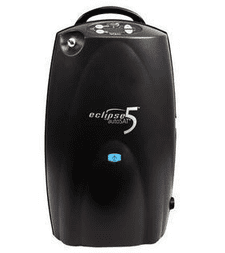
The SeQual Eclipse 5 is the 4th generation model in SeQual’s extremely popular Eclipse line of concentrators.
In fact, the Eclipse 5 is one of the best selling and most reliable continuous flow portable oxygen concentrators on the market. It offers the highest oxygen output on the market, gets good battery life, and it was also designed for the US Military.
What Comes With Your Eclipse 5?
- SeQual Eclipse 5 Portable Oxygen Concentrator
- 1x Battery
- AC Power Supply
- DC Power Supply
- Travel Cart
- Accessory Bag
- Tubing
- Filter
- Manual
- 3 Year Warranty
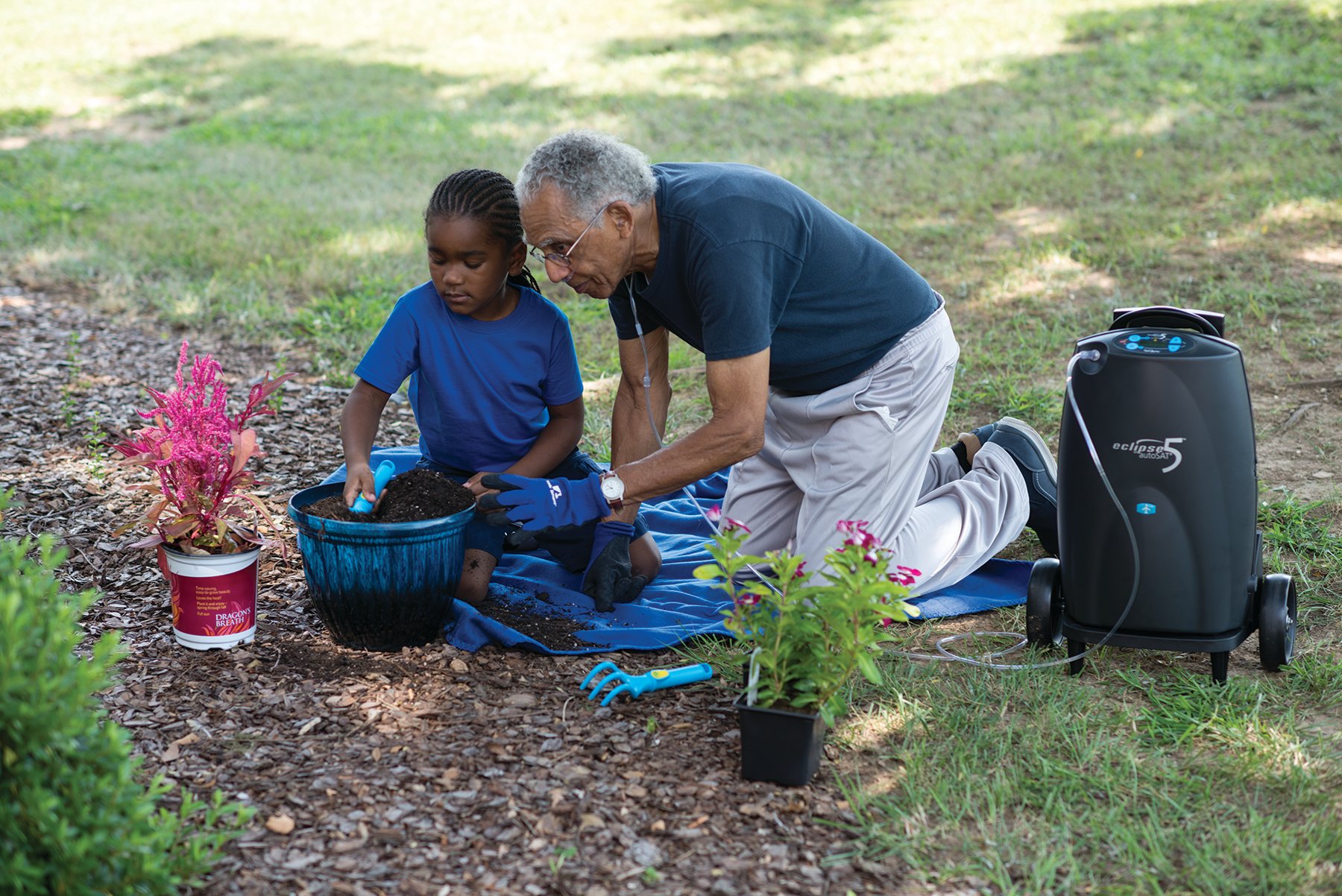
Other COPD Gift Ideas
FDA Approved Pulse Oximetry Monitor
![]()
Having a FDA approved pulse oximetry monitor indicates whether or not you are getting enough oxygen.The large, easy to read LED display and accommodates fingers of all sizes, and is each to bring anywhere due to its compact size.
Blood Pressure Monitor
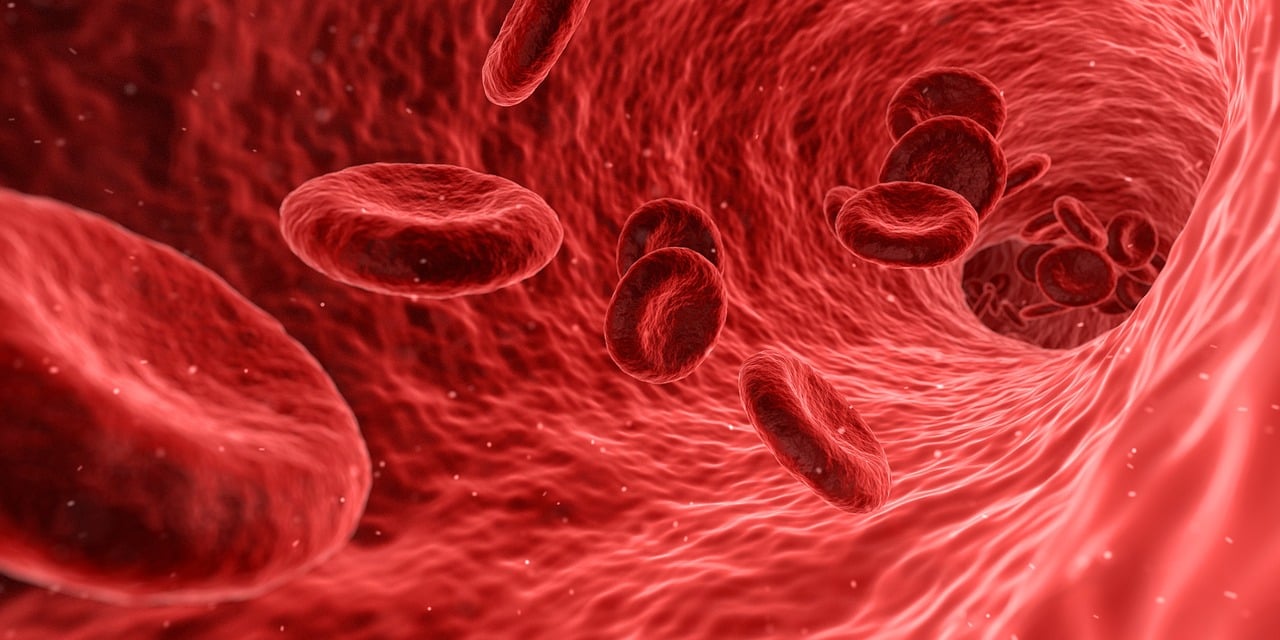
A blood pressure monitor is an essential piece of a COPD management kit! Many people with COPD also struggle with other complications and may take a variety of medications. Maintaining healthy blood pressure is an essential part of disease management.
Blood Pressure Monitor can also display an automatic alert if an irregular heartbeat is detected and the ability to remember the last 100 BP readings. All great safety features that help to better understand what the body is doing and how it functions in certain situations.
Nebulizer Compressor Kit
A nebulizer administers medication directly into the COPD patient's airways, helping them breathe easier.
Some COPD patients are lucky enough to have insurance that pays for their nebulizers, but this is not always the case and many are unable to afford one.
If your loved one does not have a nebulizer compressor kit, it is a great gift that keeps on giving.
Custom carrying backpack for the Inogen One G5
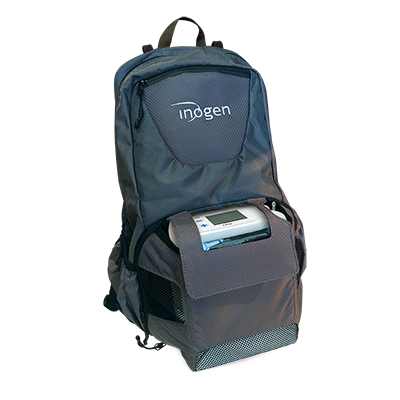
A custom carry backpack is just the ticket your loved one needs to live a more active and independent lifestyle.
This backpack is lightweight and durable, this one can be used with almost any compact portable oxygen concentrator but it fits the One G5 perfectly. It is perfect for COPD patients who like to travel and be active.
COPD for Dummies
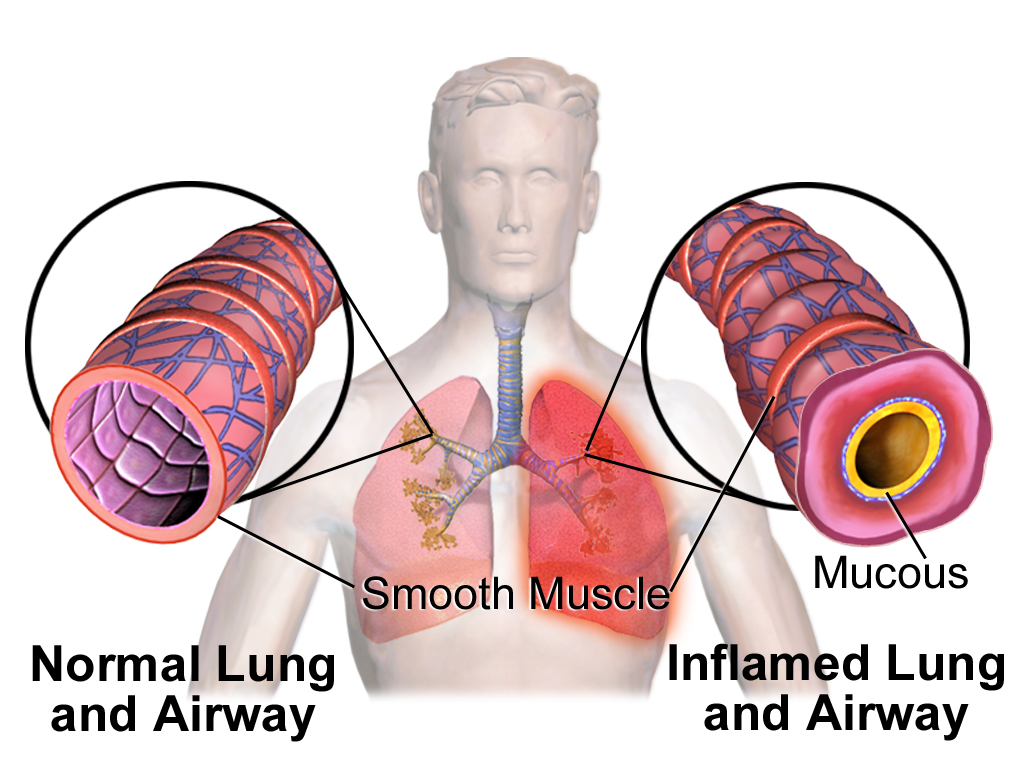
COPD for Dummies or any other resource that helps explain COPD is a great gift that help educate the family on COPD so everyone is capable of lending a helping hand, but also so that everyone can understand the disease and its toll it take on those diagnosed with it
The book includes the most basic information on COPD symptoms, diagnosis, causes, treatment, and how to cope with COPD.
This may be a nice gift for those who were recently diagnosed with COPD.
Overview
![]()
Make the holidays extra special this season with gifts for people in your life with COPD! Buying them gifts that are practical and useful for disease management can help them all year around become more independent and healthier!
If you are interested in the process of buying a portable oxygen concentrator or accessories to go with their portable oxygen concentrator simply call 1+(800)-946-1201
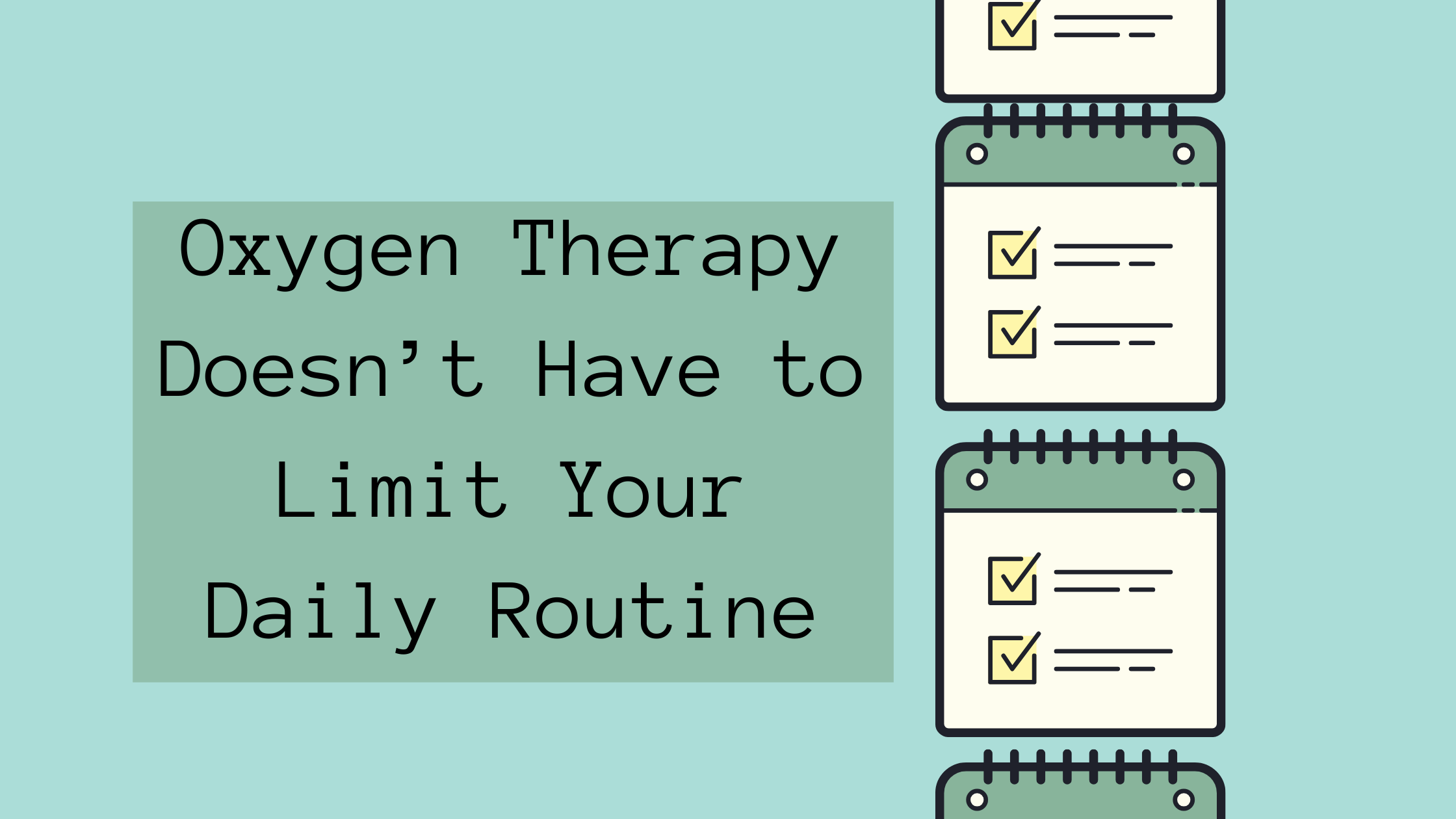
Try to think back, and remember what your daily routine looked like before you started suffering from symptoms associated with chronic obstructive pulmonary disease (COPD), pneumonia, asthma, heart failure, cystic fibrosis, or sleep apnea…
Were your days filled with long walks outdoors, or restful naps after reading your new favorite novel? Did you spend time gardening and taking care of tasks around the house, or did you dedicate you free time to traveling far and wide to see loved ones meeting new friends along the way?
No matter what your daily life looked like before, you should still be able to experience the joys of life by accomplishing a similar daily routine now, or at least a daily routine that you love.
If you are diagnosed with stage one through four COPD or another type of breathing ailment, (for the sake of this article, we will mostly refer to COPD, however, the information applies to everyone who needs supplemental oxygen therapy despite what disease or chronic illness you may have) it is time to take control of your disease before it takes control of you. There are a lot of different lifestyle choices, treatments, and medications that can help you treat and control COPD.
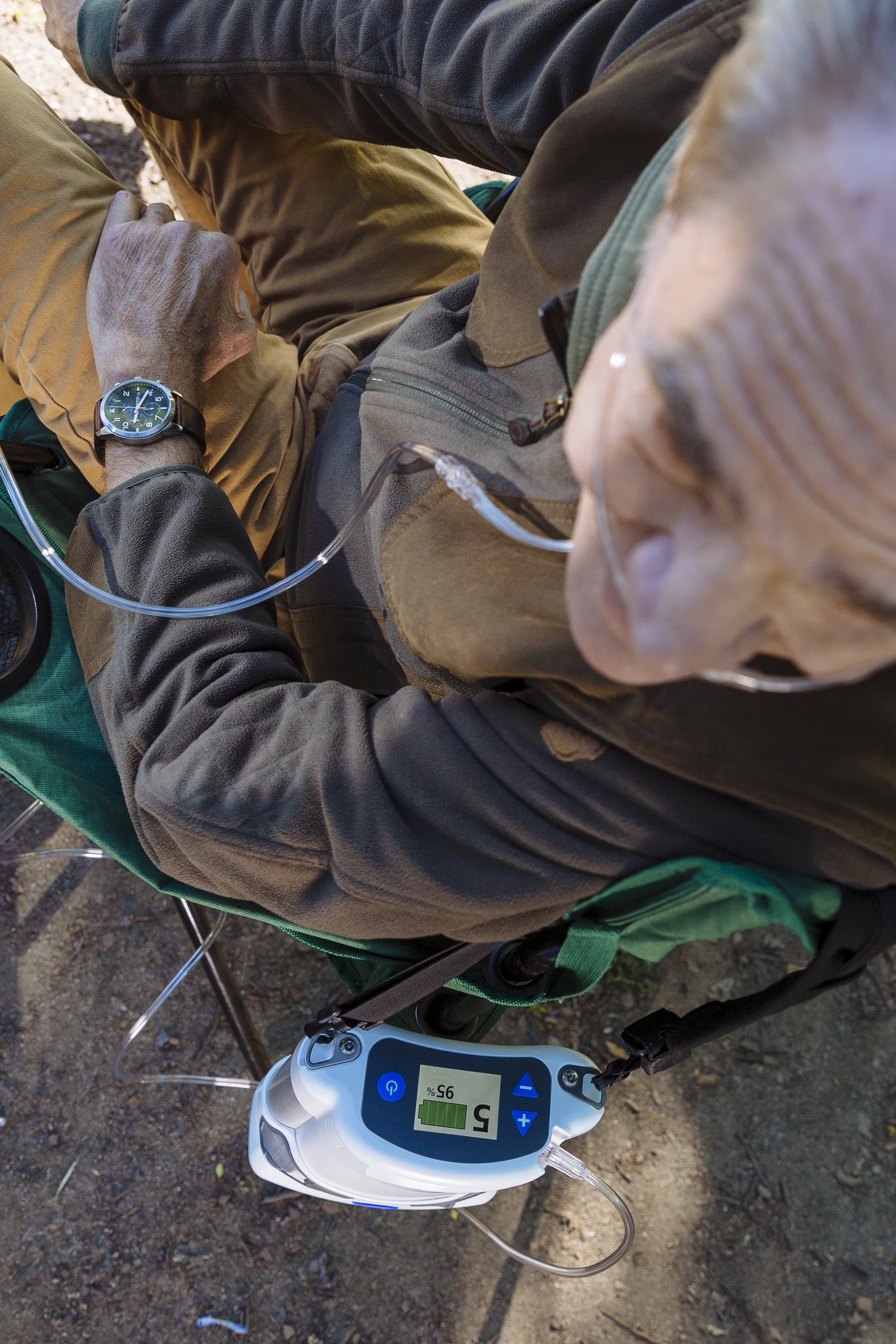
For example, Several kinds of medications are used to treat the symptoms and complications of COPD. You may take some medications on a regular basis like Bronchodilators which are medications that usually come in inhalers — they relax the muscles around your airways.
Your doctor may recommend you begin a pulmonary rehabilitation program, which is a course for people with chronic lung diseases like COPD, emphysema and chronic bronchitis. It will allow you to be as active as possible while educating you about your disease.
You can also try to limit or stop habits that impact your well-being such as smoking or exposing yourself to harmful populates and allergens.
You can start exercising more and eating lung and heart healthy foods.

However, the most impactful treatment that will allow you to get back to the daily routine which you love and value, is starting oxygen therapy. Now, the only people who can reap the benefits of oxygen therapy are patients who experience low-levels of oxygen, enough so that they require supplemental oxygen to increase their blood-oxygen levels to normal rates.
If you do not have low enough levels of oxygen, taking supplemental oxygen will not benefit you, and instead you should try to increase your exercise tolerance, take you medication prudently, and eat healthy. Inhaling extra oxygen your body does not need, can make you feel nauseous or dizzy from too much oxygen saturation.
If you need oxygen therapy, it will not only increase your blood-oxygen levels. This therapy will help you get back to doing the things you love to do, whether that is sleeping, walking, golfing, traveling, reading, socializing, and so on.
The most obvious thing about supplemental oxygen therapy is that it relieves a lot of the symptoms associated with COPD. Many of the symptoms that come with COPD are debilitating, leaving you at the will of your breathlessness and irritation. Taking away these symptoms gives you the freedom and energy you need to take advantage of all the life you have left!
Oxygen therapy relieves symptoms associate with your chronic illness so you can get back to doing what you love

Your goal when it comes to oxygen therapy should be to continue as many of your usual activities as you can!
You should work with your doctor and oxygen supply company to get oxygen equipment that will allow you to do every activities you still enjoy. Choosing the right type of equipment for you and your lifestyle is crucial — the right portable oxygen equipment can play a major role in improving your quality of life, starting by relieving a lot of your symptoms.

Here are 10 symptoms of COPD that oxygen therapy will work to improve or relieve, and some of the benefits you reap by doing so:
- Combats breathless
- Reduces dry coughing
- Improves stamina and energy
- Increases exercise tolerance
- Strengthens muscles, joints, and bones
- Give you the ability to travel
- Improves sleep
- Increases life expectancy
- Reduces headaches and nausea
- Can improve memory
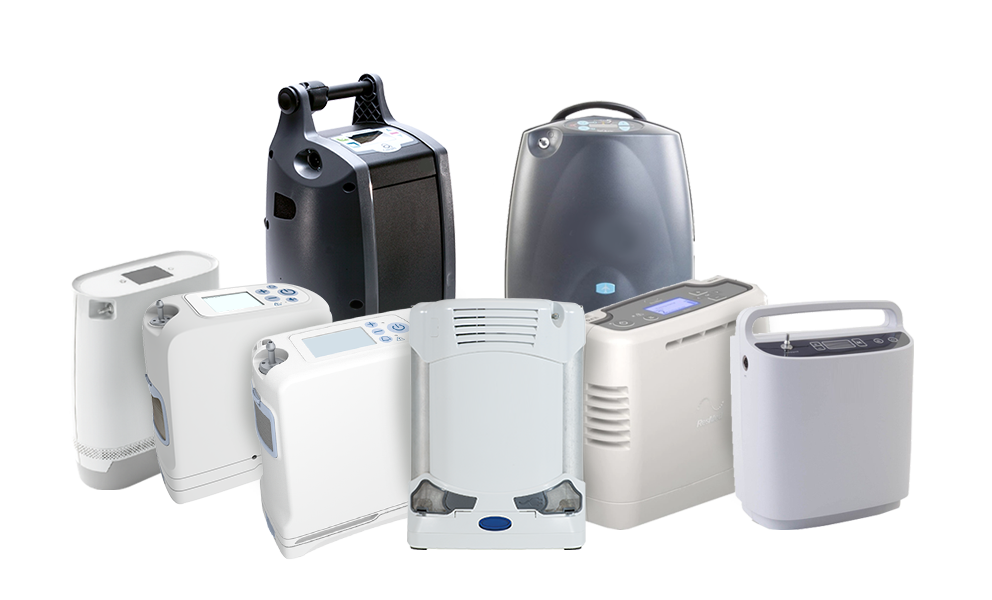
Combats breathlessness
Oxygen therapy takes away that feeling of breathlessness all times of the day. Whether you are resting or exercising, while you are using your oxygen, you should feel comfortable breathing and capable of doing things that once made you stop to catch your breath.
If you use a portable oxygen concentrator (POC), for example the Inogen One G5, you are able to carry it with you simply by slipping it into your purse, side satchel, or backpack. It only weighs 4.8 pounds, and has a pulse dose rate 1-6. So if your oxygen levels fluctuate throughout the day depending on the activities you are performing, your POC will be able to range between every oxygen source you need.
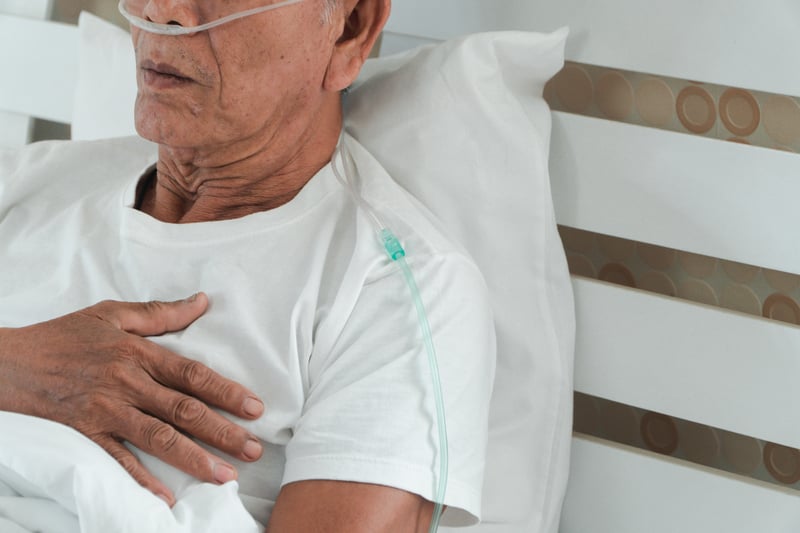
If you have very low levels of oxygen, and you require a continuous flow of oxygen while you rest or sleep, but during the day a pulse dose setting works for you, the Respironics SimplyGO POC has you covered. This unit weighs in at a mere 10 pounds and the SimplyGo is one of the smallest and lightest continuous flow portables available.
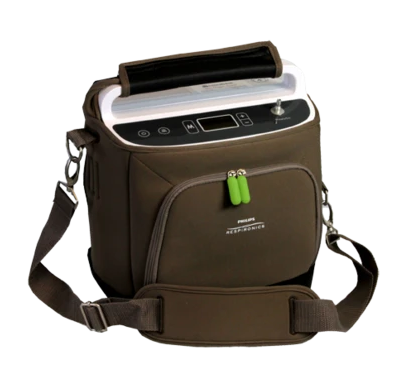
These two POC offer the same quality of life for two people with very different oxygen requirements, so whichever oxygen user you are, you can enjoy your days with little to no breathlessness.
Exacerbations, often referred to as flare ups, are caused when someone with COPD experiences extreme shortness of breath and their medications do not work in time to relieve their breathlessness, to the point where they must seek medical attention.
By using and adjusting to a portable oxygen concentrator or another form of oxygen therapy you will likely experience less flare ups and therefore spend less time in the hospital or seeking emergency medical attention.
This peace of mind alone can serve as many forms of release from COPD’s control over you, to the point where you feel in control of your disease.
Works to alleviate symptoms associated with coughing
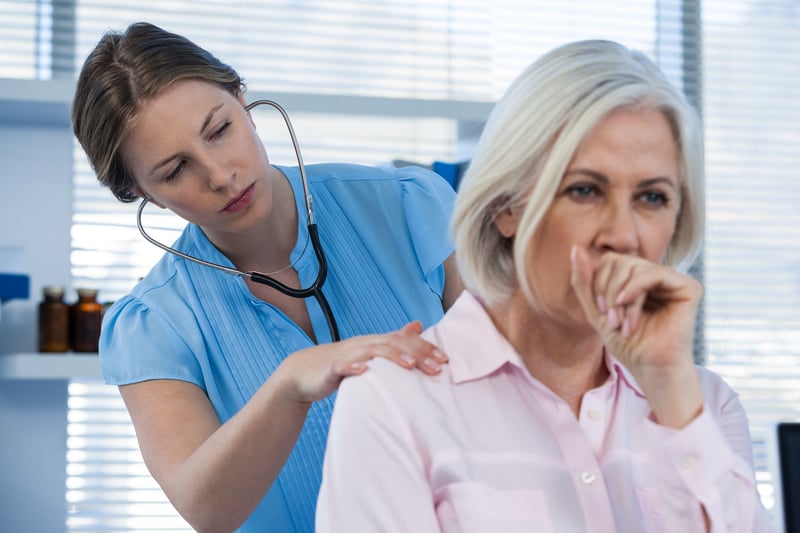
If you have COPD, you have definitely experienced a persistent cough, but did you know that a cough that brings up a healthy amount and color of mucus is actually very beneficial for your airways and lungs?
If you are coughing “correctly” you are clearing your airways that are filled with excess mucus and often swollen airways. These two factors make it hard for oxygen to pass through, thereby reducing the function and productivity of your lungs.
Read this article for tips and tricks on how to cough correctly if you have COPD.
.png)
Well, if you have COPD you probably also experience a non-productive cough, often caused by smoking, it's called a dry cough. Other coughs that are common among patients with COPD are associated with anxiety. These coughs can be relieved and treated so that you can avoid coughing at social gatherings and in public spaces where it may make you feel uncomfortable.
You can reduce the dry cough if your doctor prescribes you some prednisone. A Prednisone is an anti-inflammatory drug that helps with inflammation of your airways in your lungs. If your cough is due something else that over-the-counter cough medications are unlikely to help, there are still other things that you can do to quiet a pesky cough.
Drinking water thins out your mucus making it easier to expel, staying hydrated also soothes your dry, irritated throat. You should drink at least 8 ounces of water every two hours, and if you tend to drink caffeine you should drink even more than that!
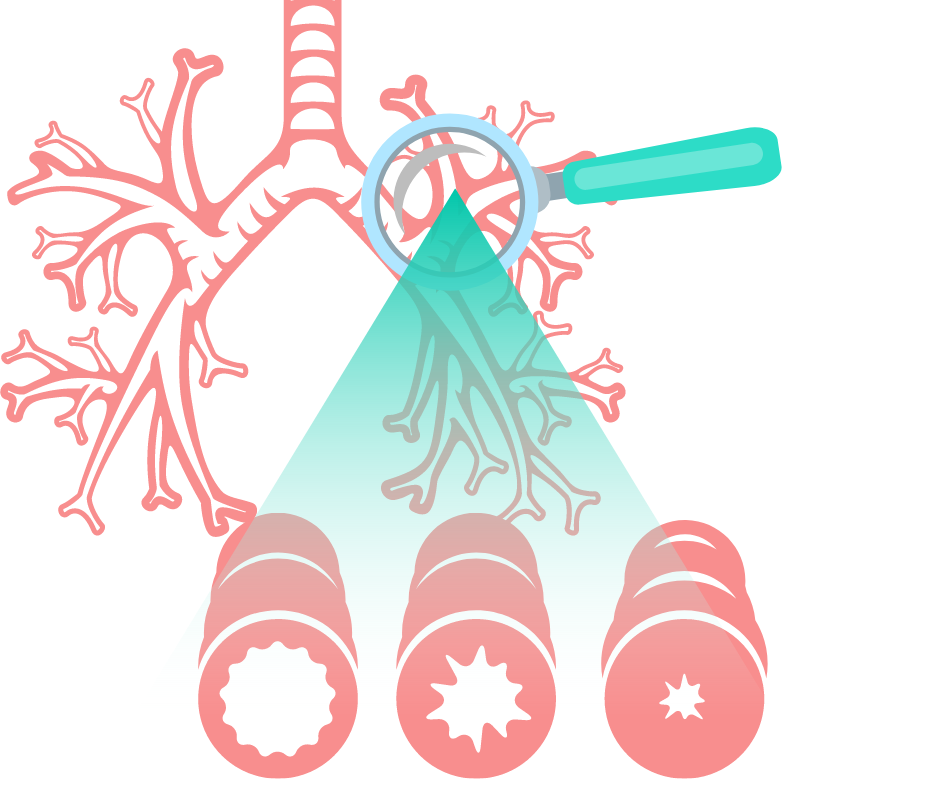
Lastly, you should try to avoid lung irritates like smoke, allergens, pollution, and other impurities in the air. These ailments can get into your lungs and stay there, making your cough last a lot longer than necessary. You can try using a humidifier in your home if you live in an arid environment to keep your throat and airways moist. Some air filters are also great for home use and can go a long way in filtering out dust and other particles in your home for fresh breathing air.
So, what does oxygen therapy have to do with a pesky cough that makes you want to stay home rather than attending your favorite annual conference or attending a social gathering? Coughing is a natural reaction that your lungs will force you to do when your airways are swollen tight and filled with mucus. Your cough alone will not clear your airways enough so that you can breathe in the amount of oxygen you need to not only be more social, but to survive.
An additional oxygen therapy prescription on top of the correct coughing techniques will get your body the oxygen it craves. You will likely start to enjoy attending more social events like you once did because you are not coughing as often, and when you do cough, you can excuse yourself to clear mucus efficiently, so you are able to get back to the festivities.
Improves stamina and energy
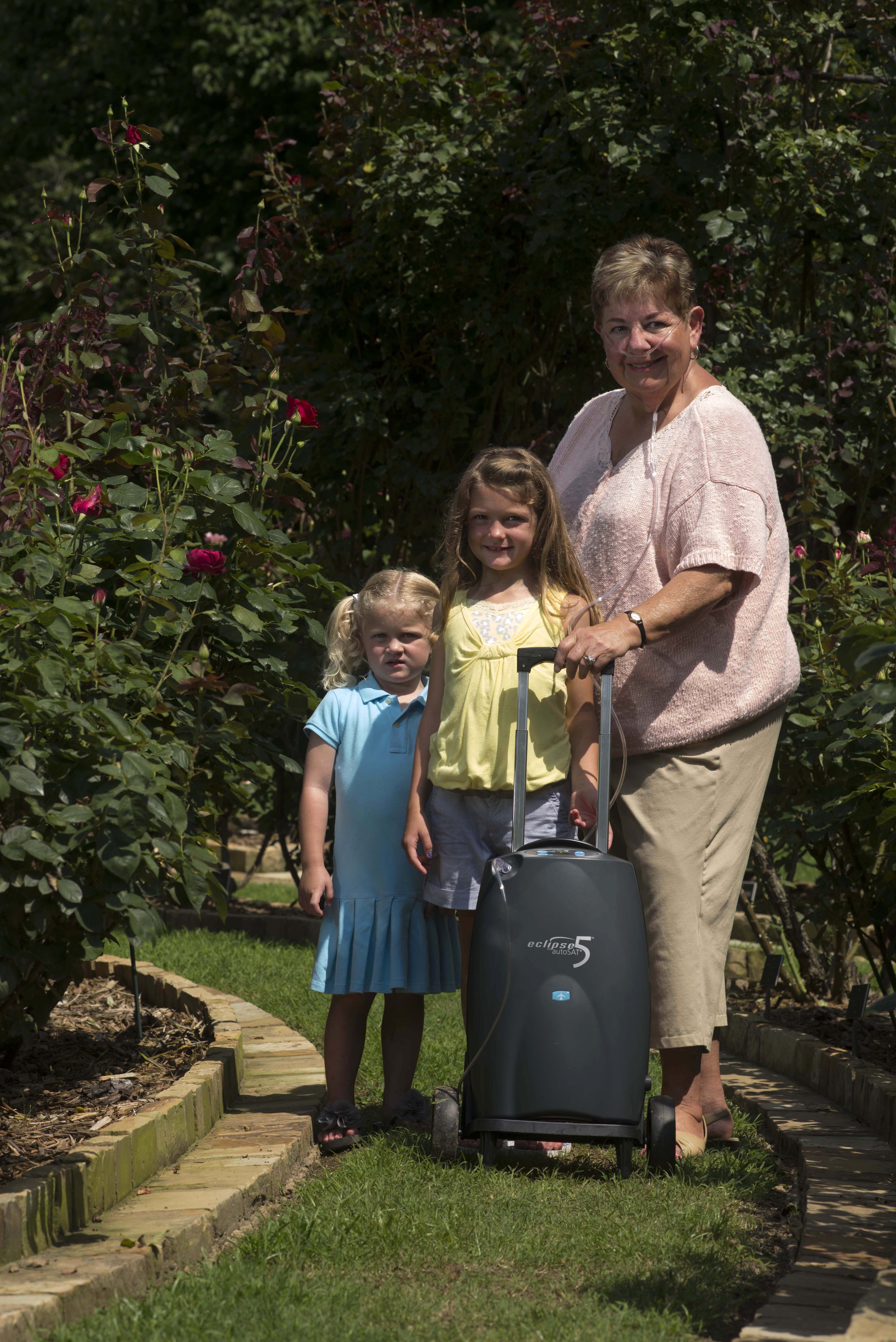
Your lack of energy may not have to do with your age at all. As we age we often find reasons to blame our tiredness on the fact that we are getting older. However, this is not always the case and if you are willing to accept that reality, it's time to take a look at your oxygen levels.
Without the proper exchange of gases, oxygen and carbon dioxide, your body can't get the oxygen it needs. When your body is low on oxygen, you will feel tired and fatigue comes more quickly when your lungs can't properly inhale and exhale air. You'll develop low blood oxygen levels, a condition called hypoxemia, which is one of the main signs associated with COPD that indicates you need oxygen therapy.
Your doctor can perform a series of respiratory tests to see what your breathing capacity is and how well your lungs are functioning. In stages one and two of COPD, your oxygen level may be sufficient enough on their own, and if you stick to a healthy and active lifestyle, you should be able to slow down the progression of your disease from becoming more severe.
{{cta('43b79c5e-6bd6-4f02-ac27-2d038d20c146','justifycenter')}}
Once your lungs require supplemental oxygen therapy, this means that you probably have reduced ability to do daily actives without experiencing severe shortness of breath, your stamina and energy have likely declined to the point where you feel lethargic or even exhausted throughout the day.
While there is no cure for COPD, oxygen therapy is essentially a cure that will boost your stamina and energy levels! Once you get adjusted to the best portable oxygen concentrator designed to fit your needs, you will be able to get back to the sports, hobbies, chores, and other aspects of your life that give you purpose!
Works with you to help improve your exercise tolerance
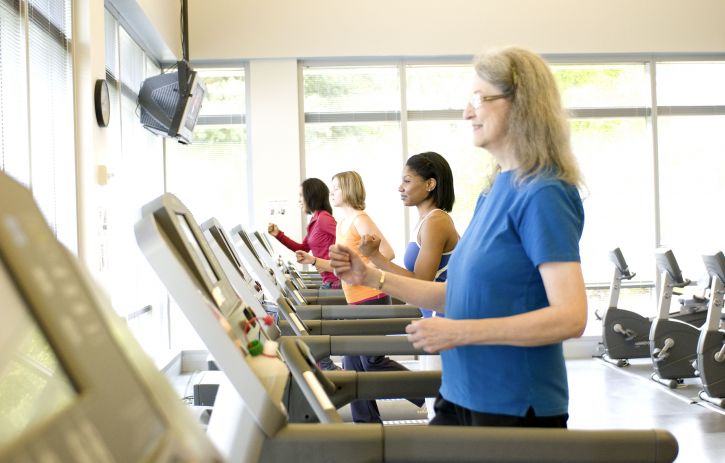
Exercise is one of the best treatments for slowing down the progression of your COPD. And before you started on oxygen therapy, you probably had no intention of exercising because simple tasks would leave you breathless. Exercise seemed out of the picture.
If you have a lightweight and battery powered portable oxygen concentrator (POC), you can go out for walks and adjust the oxygen level to the appropriate output so that you do not feel as breathless and exhausted while walking.
You can also bring your POC with you to the gym, pulmonary rehabilitation, or anywhere else that you get your daily physical activity in.
And because your blood oxygen levels are more saturated after adjusting to your supplemental oxygen, you will not feel as fatigued and you will be able to build up your exercise tolerance.
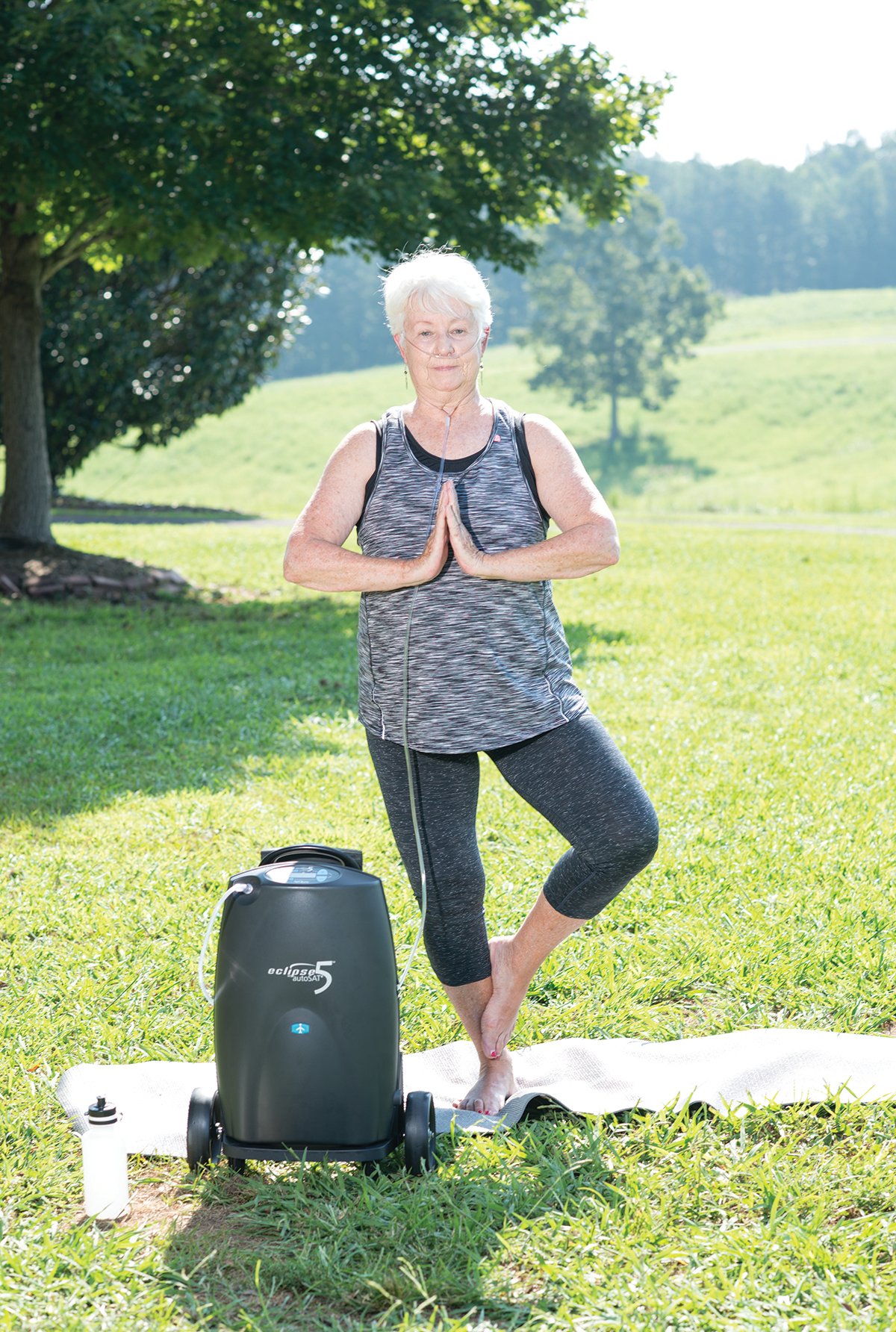
This means that you might not be able to walk to the end of the street right now, but if you start walking to and from the kitchen into the living room, and then start down the driveway from your front door, eventually you will have the ability to walk up and down the cul de sac.
By improving your exercise tolerance, you are strengthening your heart, bones, muscle and most importantly your lungs! In order for you muscles to work properly your blood must be capable of delivering oxygen-rich blood to the muscle that you are working out, so in order to do this properly with COPD, supplemental oxygen is a must.
The best portable oxygen concentrators for exercise would be a unit that is lightweight so that you can carry it while you walk, jog, bike, or do aerobics. That being said, one of the lightest portable oxygen concentrator is the Caire Freestyle Comfort, and it only weighs 5 pounds. This POC offers pulse dose oxygen delivery at any rate of 1-5, this means it can deliver anywhere from 210 mil/min (milliliters per minute) to 1050 ml/min of oxygen.
The Freestyle Comfort is a wonderful option for COPD patients that need supplemental oxygen for exercise, and throughout the day and if you do not require more than 1050 ml/min of oxygen.
But many COPD patients require a continuous flow of oxygen to start or continue to exercise, others just require a higher pulse dosage.
In the case of the latter, the Respironic SimplyGO portable oxygen concentrator is an option for people who need a pulse flow settings 1-6 or continuous flow settings 0.5-2.0 LPM. This unit weights almost 10 pounds, which is slightly heavier than the other units we have discussed in this article, but that is nothing to shy away from!
You can use your POC with a portable travel cart, and research has shown the travel cart makes it much easier for a patient to bring their oxygen with them. For example, it can take less energy to pull an 18 pound unit behind you than it takes to carry a 5 pound machine so there's no need to be afraid of the larger machines.
No matter what your oxygen requirements are, a certain amount of exercise is right for you. It is up to you to take the initiatives and start somewhere where you can build up strength and endurance, and with the help of the right oxygen equipment, you can get anywhere!
Strengthens muscles, joints, and bones
Similarly to the section above about exercise, oxygen therapy can help to strengthen your muscles, joints, and bones. Now, it is important to understand that using your portable oxygen concentrator or any form of oxygen therapy will not strength your body on its own, simply by you breathing it in.
However, by adjusting and adapting to your oxygen therapy, this will give you the “tools” you need to be successful in training, exercising, and building strength.
Allows you to travel worry free
While there is no direct “symptom” of COPD that says you cannot travel, the condition does impose a lot of challenges when it comes to travel, whether it's traveling by car, airplane or boat.
The only “cure” for travel with COPD when you need oxygen therapy, is a portable oxygen concentrator. This is because if you have a liquid oxygen tank or a gas cylinder that you rely on most of the day and night, you are not allowed to travel by plane with one of these oxygen tanks.
A portable oxygen concentrator is FAA approved! This means that you can bring your POC on the airplane with you.
The SeQual Eclipse 5 portable oxygen concentrator may be heavier than other POCs like the Inogen One G3, G4, and G5, but this unit is still very easy to travel with and perfect for everyday use. It comes with a wheeled travel cart that makes pulling your concentrator behind you seem effortless.
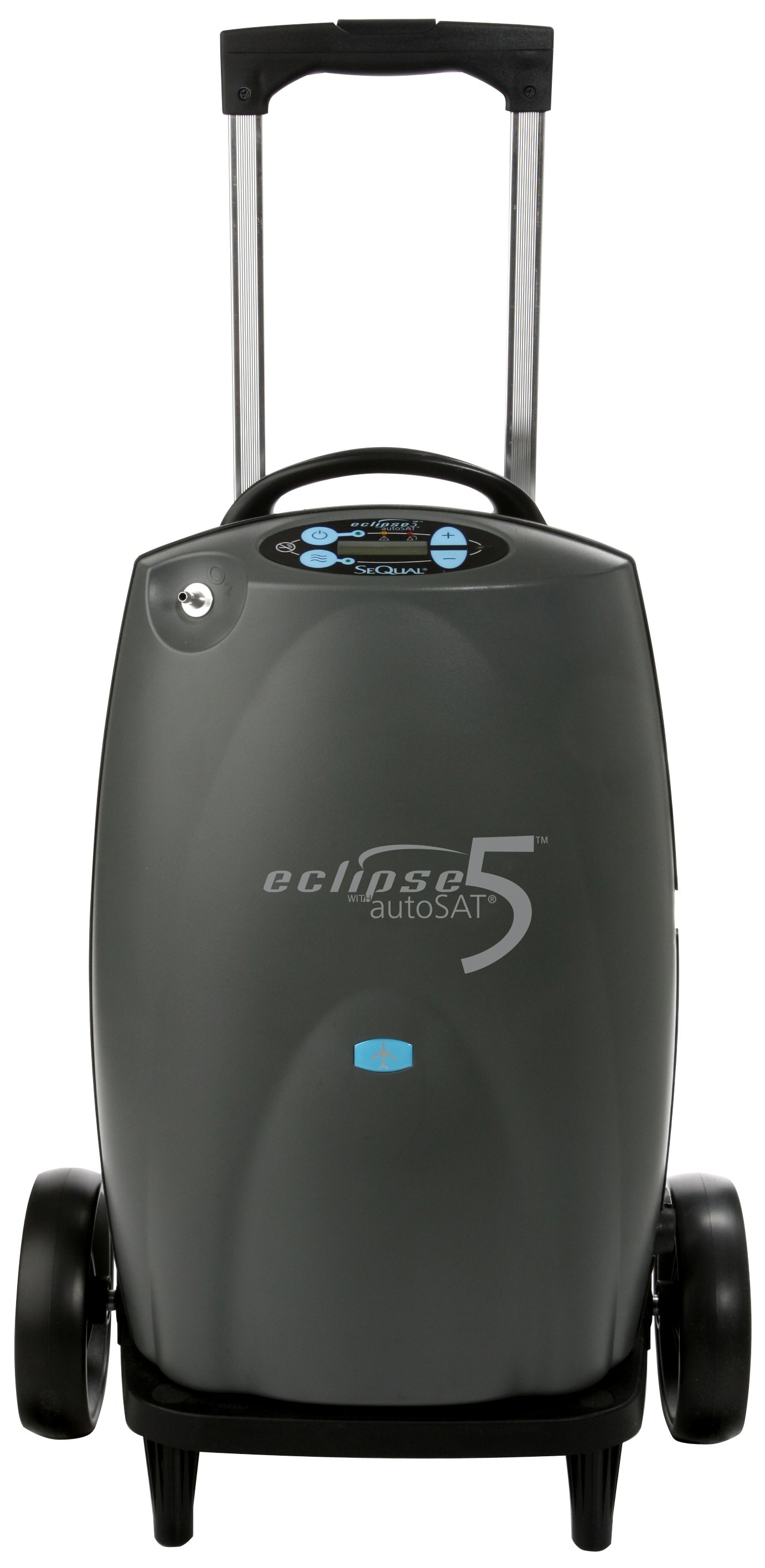
The travel cart is equipped with oversized wheels, an elevated platform, and a telescopic handle. The oversized wheels and elevated platform make going up curbs and stairs a breeze. They also help protect your concentrator from water when you have to go over puddles or when it’s snowing.
The telescopic handle lets you adjust the travel cart to the height that is most comfortable for you! And if you ever need to store your concentrator the handle slides all the way down and locks. So if you’re traveling you can keep your SeQual on the travel cart and it will still fit underneath the seat in front of you!
If you are eager to get back to traveling, it is time to look into which POC will meet your oxygen requirements.
Helps you sleep more soundly
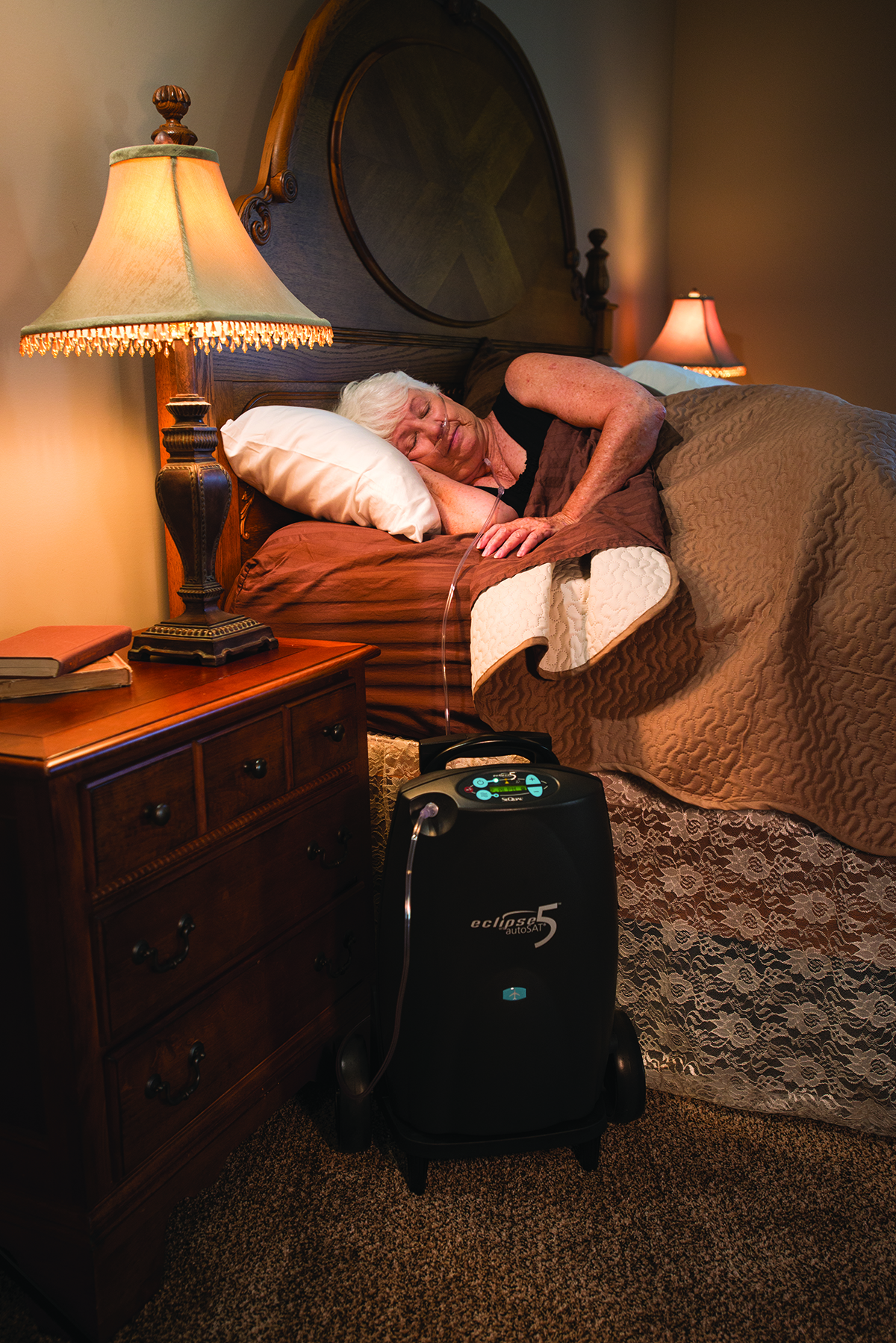
Oxygen therapy is shown to improve the quality of your sleep. This is because the lack of oxygen can wake you up while you are in the REM cycle of your sleep.
Many people with COPD also have obstructive sleep apnea. Therefore, you probably already use a CPAP or BiPAP machine while you sleep to keep your airways open and keep them from collapsing with every inhale and exhale.
If so it is important to have a POC that is compatible with your CPAP and BiPAP machine.
No matter what your oxygen requirements are at night, LPT medical has the right unit that will work for you, and all of our units can hook up to your CPAP and BiPAP machine. That being said it is very important you talk to your doctor about using oxygen at night, and whether or not this decision is right for you.
Can add years to your life
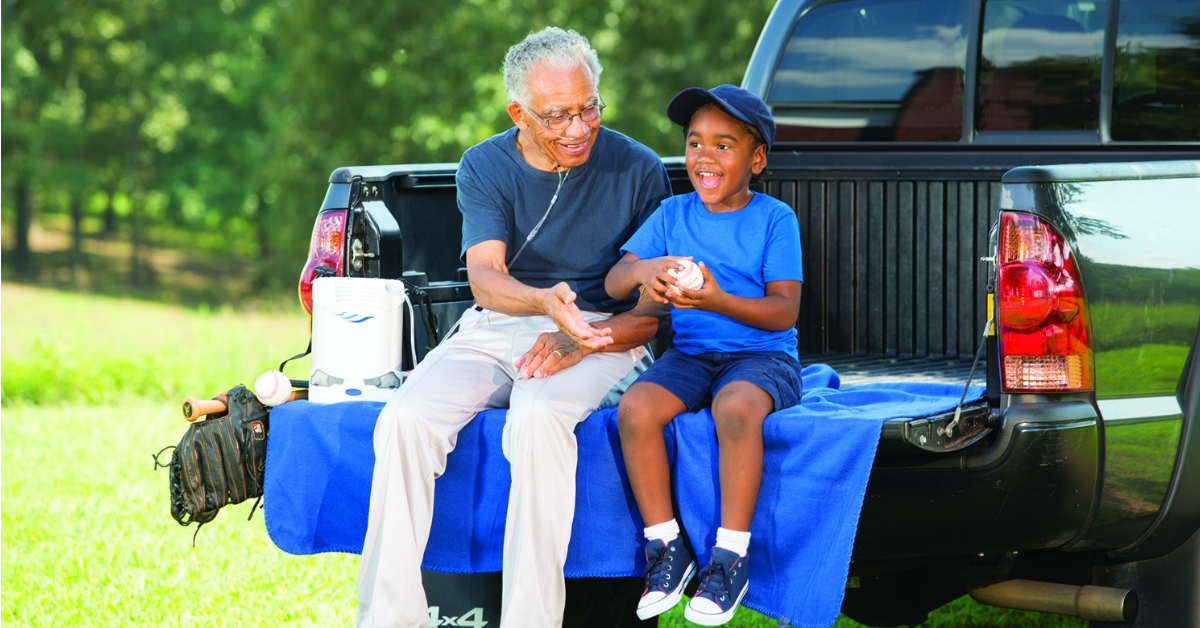
COPD is a chronic illness, meaning there is no cure, and therefore the disease will progress into a more severe state. Nevertheless, there are plenty of lifestyle changes, treatments, medications, and therapies that will slow down the progression of your disease, thereby adding years to your life.
By far, the most important benefit of long-term oxygen therapy (LTOT) is that it may prolong your life, especially if you have COPD with severe resting hypoxemia (low levels of oxygen in your blood) and/or you use oxygen continuously rather than just at night or sporadically.
A combination of healthy choices and medication will get you very far in slowing down the progression of your COPD.
Life expectancy for people with COPD can be predicted by assessing body mass index (BMI), airway obstruction, dyspnea (Breathlessness), and your exercise capacity. After these value are taken into account, your doctor can give you an average of year you are expected to live
In the end, the average life expectancy for people with COPD is just that—an average estimation. You can exceed expectations by taking control and addressing the factors that you can change.
Relives headaches and nausea

One of the more obvious symptoms oxygen therapy can relieve, is reducing COPD related headaches and nausea.
Headaches and that nauseous feeling are often caused by the lack of oxygen reaching your brain. This goes for everyone and not just people with COPD. Have you hiked a mountain top,or been to a town at high elevation where the air is thinner? At high altitudes there is less oxygen in the air, and therefore less oxygen you can breath in, and in these condition someone might experience “altitude sickness”
Altitude sickness causes someone to feel dizzy, nauseous and will also induce a painful head all, all because your body is not getting the amount of oxygen it is used to when you are at lower elevations. A simple cure is to relax, and drink plenty of water and avoid alcohol.
{{cta('fa8abc2a-1e88-4fa3-82fd-1cb5b9ed43b2','justifycenter')}}
But if you have COPD, drinking water may help your headache or other symptoms, but not always and not for long. Eventually your headaches will not feel better after drinking water and oxygen therapy is the best solution.
Once these pesky symptoms of COPD induced dyspnea are relieved, you can get back to doing the things you enjoy, rather than being held back by a bad headache or feeling nauseous.
Can help to improve your memory
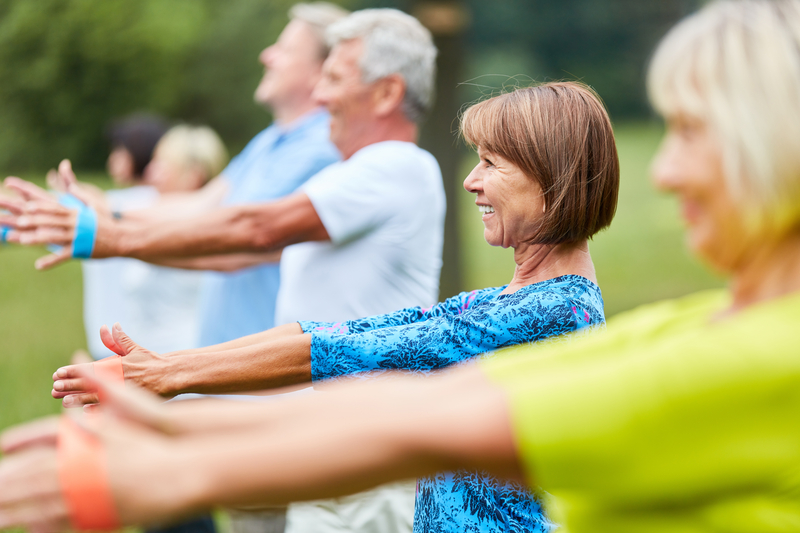
Several studies show that using oxygen at home for more than 15 hours a day increases quality of life, oxygen therapy has good short-term and long-term effects in people who have COPD.
Using oxygen may also improve confusion and memory problems.
Getting back to the daily life you are used to

Living with a serious disease like COPD can be scary, stressful, and sometimes even overwhelming. Just the feeling of shortness of breath, the main symptom of COPD, can be a very frightening sensation.
Feeling anxious, overwhelmed, and even depressed is a natural and, to an extent, even a healthy reaction to getting diagnosed with a chronic disease. However, you shouldn't let these negative feelings control your life.
If you don't take steps to manage your anxiety and fears they can end up taking a huge toll on your emotional and physical health. It's okay to feel anxious and depressed sometimes, but it's also important to learn to manage and minimize your stress.
In this article we'll help you better understand the effects of chronic anxiety and how to manage it while living with COPD. We'll show you a variety of effective relaxation techniques, breathing exercises, and lifestyle changes you can use to help you navigate the difficult emotional aspects of COPD.
{{cta('b59df0c1-c4de-47a8-8e1c-0d33d4b414aa','justifycenter')}}
Understanding The Emotional Impact of COPD

Everyone experiences feelings of depression and anxiety from time to time. It happens as a natural reaction to unfortunate events and the troubles of everyday life.
However, nothing can truly prepare you for the emotional effects of getting diagnosed with a disease like COPD. Negative emotions like fear, anxiety, worry, and guilt can easily get out of hand if you don't learn how to manage them in healthy ways.
Here are some common emotional reactions people experience after getting diagnosed with COPD:
- Anxiety and panic
- Depression
- Anger
- Fear and worry
- Grief
- Helplessness
- Frustration
- Guilt and remorse
- Feeling loss of control
As you can see, living with a chronic disease can be an immense emotional challenge. The good news is that it often gets better after you have time to adjust and get used to your treatment plan.
It is normal to feel a great deal of fear, stress, and guilt at first, but you can take back control over your physical and mental health by giving yourself time to adjust and make the life changes necessary to stay healthy. You will also find your disease much easier to manage if you seek support from friends and family and practice healthy coping mechanisms and relaxation techniques.
If you are able to manage the emotional aspects of your disease, it will become much easier to manage your symptoms, live a healthy lifestyle, and follow your treatment plan. That's why it's so important for people with COPD to learn how to manage negative emotions and practice habits that foster a positive mindset.
In the following sections we'll show you a variety of tips and techniques to help you feel better and manage the difficult emotional aspects of COPD. But first, we'll discuss how to recognize the signs of anxiety and depression and how to break out of negative thought cycles related to COPD.
{{cta('fa8abc2a-1e88-4fa3-82fd-1cb5b9ed43b2','justifycenter')}}
Recognizing the Signs of Anxiety

Anxiety is often associated with the “fight or flight” response, an instinctual reaction that all humans experience when confronted with danger. In many cases anxiety actually serves a practical purpose; it helps prepare us to recognize and respond to real threats.
However, anxiety becomes a problem when it happens too often and won't go away. This happens when we feel anxiety in response to things that are not real, immediate threats, like worrying over an argument or feeling anxious about the future.
Since there's no solution or easy “off” switch when you worry about these types of things, sometimes the anxiety just doesn't go away. It's easy to get caught in negative thought loops where you worry about the same things over and over again when there's no actual purpose or use for dwelling on those worries all.
It's common to feel anxiety in response to thoughts, fears, and situations that are out of your control, especially when you suffer from a chronic health condition like COPD. It's important to be able to recognize these feelings of anxiety because when you know they're there, you can actually do something about it.
Here are some of the immediate physical effects of anxiety you should learn to recognize:
- Rapid breathing
- Rapid heart rate
- Nausea
- Shortness of breath
- Sweating
- Paleness or flushing
- Stiff, tensed muscles
- Twitching or trembling
- A tight feeling in your throat
- Dry throat
Anxiety can also have less obvious physical effects in the short term that can affect your COPD:
- Re-distribution of fluids throughout your body (and your lungs, which can affect breathing)
- Increased blood sugar (because it triggers extra glucose production in the liver)
- Increased blood flow throughout your body
As you can see, all of these different anxiety symptoms can affect your breathing and your COPD. Anxiety affects your heart rate, breathing rate, water distribution, and breathing muscles, all of which affect your respiratory system and together can make your COPD symptoms even worse.
If left untreated, chronic anxiety can even cause more serious health complications that are particularly dangerous for people who have COPD. Long-term anxiety can suppress your immune system, affect your short-term memory, cause problems with digestion, and even increase your risk for premature heart disease.
{{cta('43b79c5e-6bd6-4f02-ac27-2d038d20c146','justifycenter')}}
Breaking Out of The Negative Feedback Cycle of Anxiety
|
|
| Image courtesy of Fayez on Flickr. |
Because the physical effects of anxiety often mimic or exacerbate symptoms of COPD, bouts of acute anxiety can quickly spiral out of control. You might start out feeling a little bit stressed out, but when the anxiety symptoms kick in it can be difficult to stay calm and control your breathing.
The cycle happens like this:
- You start to feel stress or anxiety
- The anxiety makes your throat tighten and increases your breathing rate, making you feel short of breath.
- Feeling short of breath inspires even more fear and anxiety, causing your heart to race even faster.
- Your increased heart rate and muscle tension makes it even more difficult to breathe, which inspires more anxiety... and the cycle continues on.
When you get stuck in this feedback loop, it can be difficult to calm down enough to pull yourself out of it. It becomes easy to confuse symptoms of anxiety with symptoms of COPD, and you can't manage your anxiety if you don't realize that it is what's causing your physical symptoms.
In these situations, breathing exercises and relaxation techniques are the most effective ways to bring your anxiety and physical symptoms back under control. However, the best solution is to learn how to recognize the early signs of anxiety so you can get a handle on it before the negative cycle starts.
The Negative Feedback Cycle of Depression

Feeling depressed can also start a negative feedback loop that can be detrimental to your health. This happens when depression snuffs out your energy and motivation, leading to habits and behaviors that continue to make your depression, and your COPD, worse.
Here are some of the common symptoms of depression:
- Decreased energy and fatigue
- Feelings of sadness, anxiety, and emptiness
- Feelings of helplessness, worthlessness, or guilt
- Pessimism, cynicism, and hopelessness
- Restlessness and irritability
- Loss of interest in hobbies, exercise, and other activities
- Changes in eating habits (increased or decreased appetite)
- Increase in aches and pains, headaches, and other physical ailments
- Reduced ability to focus and concentrate
The negative feedback loop of depression begins with feelings of hopelessness and helplessness that cause you to give up on healthy habits and treatment goals. When you're depressed, you're likely to give up and avoid activities when you feel breathlessness or other symptoms of COPD, which only leads to even worse symptoms and fuels further depression.
It's important to familiarize yourself with the symptoms of depression so you can address it and manage it if it occurs. It's also important to recognize the unhealthy habits that start the negative feedback loop of depression so you can take care of it before it spirals too far and takes a permanent toll on your health.

Here's what the negative feedback loop of depression looks like:
- You feel depressed and hopeless because of your disease, so you choose to stay inside and do nothing instead of pursuing hobbies and other activities. You might have difficulty getting out of bed and motivating yourself to continue healthy habits like exercising and cooking healthy meals.
- As a result of being less active, your symptoms get worse and your disease may progress even further. You feel more breathless and fatigued and have even less energy to exercise and do other activities.
- This leads to even more anxiety and depression, which makes you feel even less motivated and less capable of managing your health. As your physical condition declines, it becomes more and more difficult to stay active and causes even more emotional distress.
- This leads to even more depression, more time spent sedentary, and more physical symptoms. If the cycle isn't interrupted, it can make your COPD symptoms irreversibly worse and cause permanent physical decline.
Anxiety and Depression Can Have Long-Term Effects on Your Health
A certain amount of anxiety is healthy, and can even motivate us to take positive actions and make healthy choices. But when anxiety or depression is prolonged, it can have serious negative effects on your body.

Here are some of the long-term effects that chronic anxiety and depression can have on your body:
- Insomnia
- Suppressed immune system
- Reduced ability to focus and problem solve
- Impaired short-term memory
- Reduced sex drive
- Changes in your metabolism
- Indigestion
- Increased susceptibility to stomach ulcers
- Cardiovascular problems
- Nervous system malfunction
This is why it's very important to get support and learn new habits if you suffer from anxiety or depression on a daily basis. If you let it eat away at you for too long, it can have devastating effects on and start an unhealthy, downward spiral of physical and emotional distress.
How to Deal with the Emotional Aspects of COPD
There are many proven and effective methods for dealing with challenging, stressful times such as living with COPD. Relaxation techniques like meditation, breathing exercises, and a variety of other activities can make all the difference when you're dealing with overwhelming emotions.
In this next section, we're going to introduce you to a variety of these techniques that you can use today to help reduce your anxiety, feel better, and gain back control over your life. If you take the time to learn and practice some of these techniques when you feel down or overwhelmed, you can teach yourself to redirect your negative energy to relaxing and calming activities, instead.
Therapeutic Activities for Emotional and Mental Health
Physical Exercise

Staying active and doing physical activities is one of the best ways to keep your mind and body healthy. It's a great way to get rid of extra tension and negative energy, and it can strengthen your breathing muscles and help your COPD symptoms, too.
Regular exercise gives you more energy and strength during the day at the same time that it makes it easier to relax and sleep at night. You'll feel stronger, more confident, and more in control of your health if you get plenty of physical activity.
Here are just a few of the many emotional benefits of exercise:
- Decreased stress and anxiety
- Improved memory and cognition
- Increased energy levels
- Increased ability to focus and problem-solve
- Increased feelings of happiness and well-being
- Better self image and increased self-confidence
- Feelings of satisfaction and accomplishment
- Protection against cognitive decline
- Increased ability to relax and sleep well at night
Along with its quantifiable physical and mental benefits, regular physical activity will help you feel more confident, secure, and give you a wonderful sense of accomplishment.
If you're not used to exercising regularly, work with your doctor to put together an exercise plan that will ease you into the habit. Start small and set realistic goals, and don't push yourself to the point of feeling too breathless or fatigued. At the same time, don't be afraid to challenge yourself and be as active as you can.
If you like structured activities, you can try joining a gym, group sport, or an exercise club. Many gyms offer a variety of classes such as aerobics, yoga, and tai chi that are great for building physical strength as well as practicing relaxation and breathing techniques.
Yoga & Tai Chi

Yoga and Tai Chi are both great physical activities for people with COPD. They are designed to improve your physical strength and endurance while practicing breathing and relaxation techniques at the same time.
Yoga is a slow-paced exercise that involves holding different stretches and poses which can be adjusted for different strength and skill levels and for people with limited mobility. It's incorporation of deep breathing exercises and meditative practices makes it perfect for patients with COPD, and can help you learn how to control your breath when you exercise.
Tai Chi is a more active exercise technique that uses graceful, flowing actions and encourages constant movement. Like yoga, what makes Tai Chi such a great exercise for COPD is that it also teaches deep breathing techniques as an integral part of the practice.
Both of these exercises are great for building physical endurance and deep breathing skills that can help you manage both the physical symptoms and emotional strain associated with COPD. If you'd like to give these exercises a try, you can look for a gym near you that offers group classes.
If you don't want to go to the gym, you can also follow Tai Chi or Yoga instructional videos by yourself in your own home. You can find guided Yoga and Tai Chi video classes in stores, at your library, and even watch them for free on sites like YouTube and elsewhere online.
Mindfulness Meditation

Mindfulness meditation is one of the most highly-researched and effective methods for reducing anxiety and depression. In fact, it's considered to be so effective for mental well-being that it should be the one thing you try even if you don't use any of the other techniques on this list.
Mindfulness meditation isn't anything like the kind of meditation you've probably seen in movies and pop culture. It's actually a very simple and relaxing activity that anyone can do; all it takes is a bit of time and patience to see results.
Practicing mindfulness meditation is all about clearing your mind of worries, letting go of distracting thoughts, and living in the present moment. It helps you learn how to separate yourself from your stress and your anxious thoughts, enjoy life without worry, and achieve a quiet inner peace.
To practice basic mindfulness meditation, you start by finding a quiet, comfortable place to sit and close your eyes. Then, you practice just living and being in the present moment. Let go of any specific thoughts and worries, and instead just focus on your breathing and listen to your thoughts as they go by without judgment.
It can be helpful to listen to a guided meditation audio clip or follow along with a written meditation guide. Mindful.org is a great resource for a variety of textual guides and information on mindfulness meditation, or you use one of UCLA Health's guided audio meditation sessions by visiting their website here.
Keep a Journal

Journaling is a proven and effective way to cope with difficult emotions and challenging times in life. In fact, research shows that journaling is a powerful tool for emotional and physical health, and something everyone should do for their mental well-being.
Journaling allows you to write and sort through your thoughts in an entirely private, safe, and non-judgmental environment. No one else will ever have to know the thoughts you put down; you are writing for just you and you alone.
Your journal can be whatever you want to make of it, but its' most helpful when you use it to better understand yourself, others, and sort through difficult feelings. It can be helpful to keep track of your moods and emotions on a daily basis so you can notice trends and patterns and see how you change and grow.
Here are some tips for a successful journaling experience:
-
Let Go of Your Internal Filter: Don't think about good grammar, good taste, or what anyone else would think about what you write. Try to write quickly and let the words flow, don't analyze them or judge them. The point is to write down raw, pure, honest thoughts, which is impossible to do if you're constantly editing yourself as you write.
-
Journal Every Day: It's easiest to journal regularly if you make it a daily habit. Keep a dedicated journal in an easy-to-access space, and try to set aside at least fifteen minutes of time every evening to write.
- Write About What Matters to You: No one else will see your journal, so you can structure it however you like and write about whatever you want to. Let go of your inner critic and write about whatever comes to mind, or whatever has been on your mind lately.
Practice Breathing Exercises

It can be scary, or even panic-inducing, when you find it difficult to breathe. In fact, it's very common for people who have COPD to experience anxiety during bouts of breathlessness or wheezing.
One of the best defenses against this kind of worry and panic is breathing techniques. Breathing exercises like pursed lips breathing and diaphragmatic breathing are extremely effective and simple ways to calm down and reduce anxiety when you experienced worsened symptoms of COPD.
Most doctors recommend practicing breathing exercises every day, even when you don't feel anxious or breathless. This helps you learn the techniques thoroughly so you can easily remember how to do them in the moment when anxiety and panic strikes.
Diaphragmatic Breathing Technique
Diaphragmatic breathing helps you learn to use your diaphragm instead of your chest muscles to breathe. This allows you to breathe with less effort and can reduce symptoms like chest tightness, breathlessness, and fatigue that often get worse when you feel anxious.
How to Practice Diaphragmatic Breathing
- First, lie on your back in a comfortable position.
- Put one hand on your chest, and the other on your belly.
- Take a deep breath in while trying to breathe from your belly, not your chest. You should feel the hand on your stomach rise while the hand on your chest stays still.
- When you exhale, once again try to push from your stomach instead of your chest. You should feel the hand on your stomach fall as you breathe out while the hand on your chest stays still.
- Repeat until you are successfully breathing from your belly and not your chest. Over time, this will become second nature and you will have better control over your breathing.
Pursed Lips Breathing Technique
Many people with COPD have airways that collapse and lungs that trap air, making it difficult to breathe. Pursed lips breathing helps you open up your airways and push all the air out of your lungs with each breath, which makes it easier and more comfortable to breathe.
How to Practice Pursed Lips Breathing
- Stand or sit in a relaxed position with your back straight.
- Relax your chest muscles and take a deep breath in through your nose lasting about two seconds.
- When you breathe out, purse your lips together (as if you were blowing a kiss) and exhale slowly through your mouth. You should take about twice as long to exhale as you did when you inhaled, about four seconds.
- Repeat several times, or until you feel your breathlessness subside.
Bringing your breathing back under control is the first and most important step to bringing your anxiety and panic back under control, too. Unfortunately, it can be difficult to remember how when you feel anxious or panicked, which is why it's important to practice often.
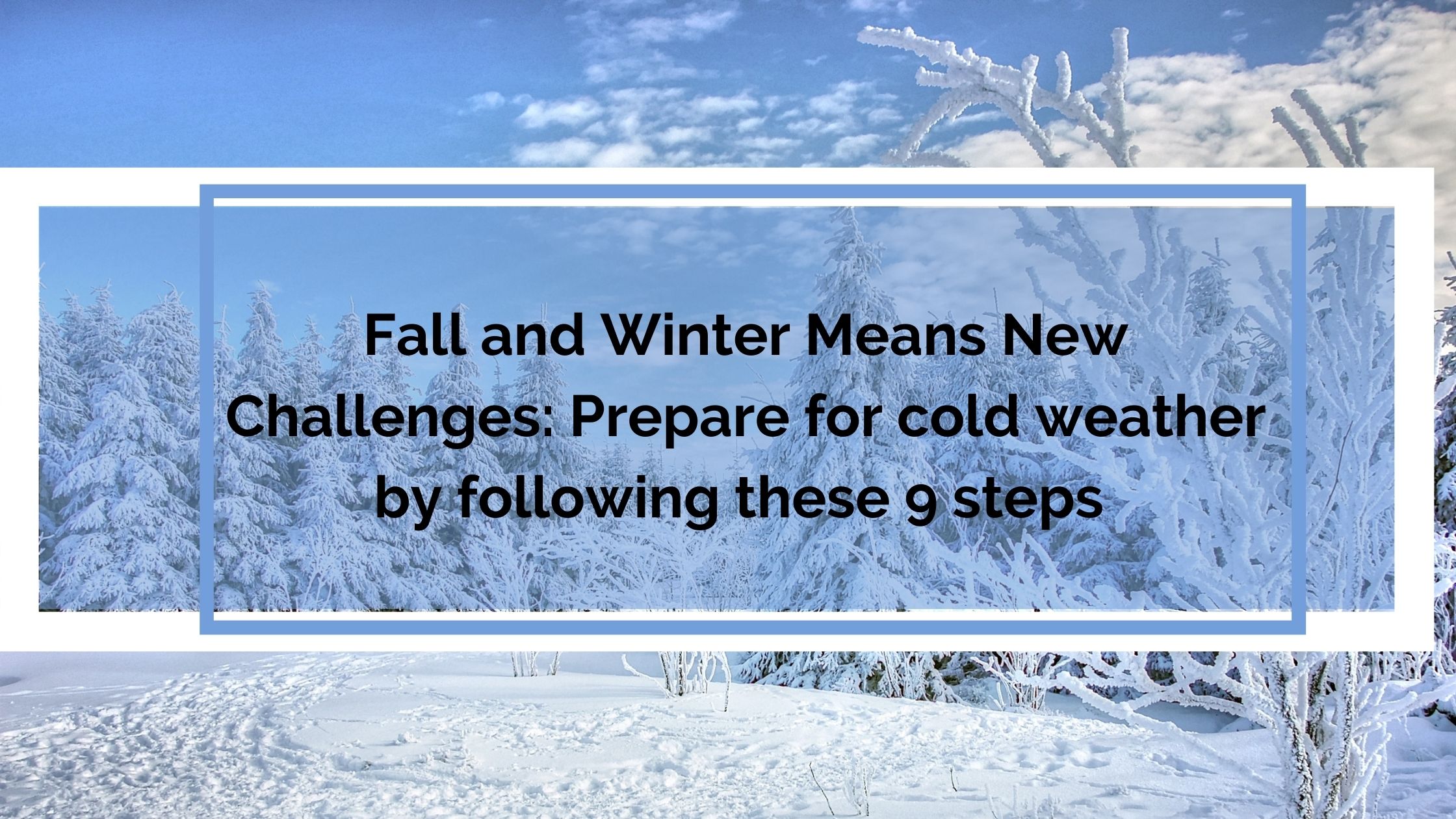
Cold weather is right around the corner, depending on where you live, this can be a dreadful time of year for many people. Especially for people with conditions like chronic obstructive pulmonary disease (COPD).
{{cta('fa8abc2a-1e88-4fa3-82fd-1cb5b9ed43b2','justifycenter')}}
Low Temperatures and nasty weather can cause COPD symptoms to get worse, which is why you have to be super careful and prepared for winter. The cold and dry air can ignite a flare-up and even require you to go to the hospital. According to a study, temperature extremes, below freezing, are particularly dangerous.
An influx of cold air into the lungs can trigger a number of negative responses in your lungs, and the cold air will narrow your airways.

When this happen you may experience the following symptoms:
- Dyspnea
- Wheezing
- Coughing
- Shallow breathing
- Increased mucus production
- Difficulty clearing airways
All of these symptoms are uncomfortable and can cause a COPD exacerbation and may require you to take a trip to the hospital if your symptoms don't improve.

More snow and frozen sidewalks are just two of the many challenges we face during these winter months. On top of all of this, travel to and from the doctors office is sometimes impossible. Taking care of yourself and taking the necessary precautions during this time is crucial for your health and wellbeing.
If you are an oxygen patient, meaning you have a pulmonary condition that restricts your ability to breathe the proper amount of oxygen into your body, this blog will be a great resource for you to help combat the cold weather and its effects on your body.
We will give you all of the tips and tricks for not only surviving the winter months, but how to create an environment in your home and mind that is nurturing and comforting!
1. Getting Enough Exercise

Exercise is a crucial part of COPD treatment and helps all people with or without respiratory illnesses.
Keeping your lungs strong also helps keep your muscles and bones healthy, so you can live a longer, happier life. In the winter exercise is especially challenging.
![]()
Driving in the snow can be so dangerous, even just walking to your car you risk the chance of slipping on ice. Driving to your pulmonary rehab course or to the gym might not be an option for you in the winter months.
Here are some great alternatives, but check with your doctor before starting an exercise program:
2. Walk
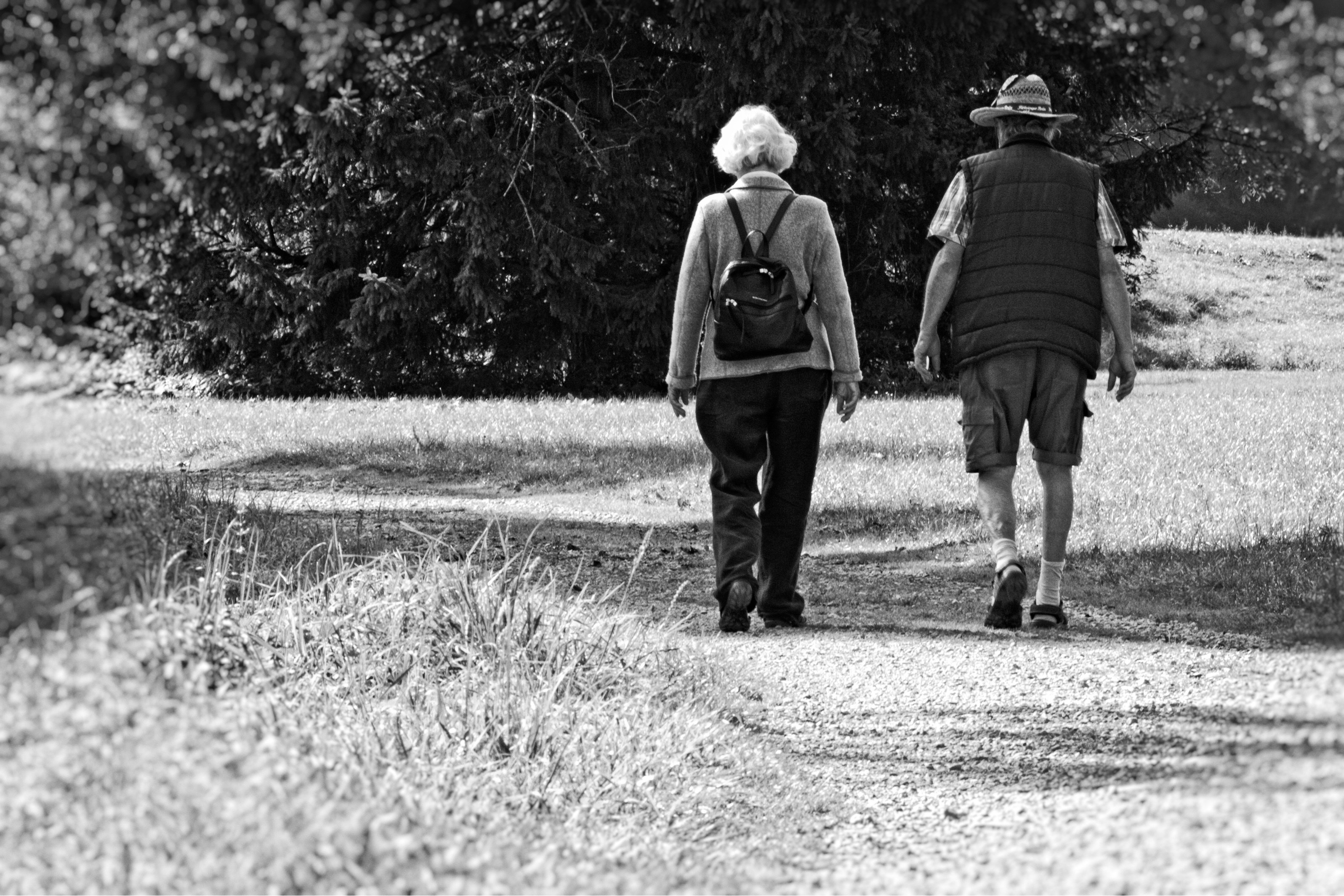
Just about everyone with COPD can walk, even if you don’t exercise much, walking is a great way to start. The best part is that you can do it anywhere, and it is still beneficial. If you have a treadmill, or space in your living room, simply just walking around your home can contribute greatly to your health.
If it seems daunting, start with super small objectives and then add 30 seconds or 10 yards each day. This slow and short pace will still be so good for you.
While walking outside, try breathing through your nose instead of your mouth may also be helpful as this will warm the air before it reaches the lungs.
3. Bike
A stationary bike is a great option for people with COPD, especially when it is too cold or snowy outside to ride a bike outdoors. Being in the privacy of your home can also help a lot of people get over the fear of exercising in front of others, which is very common.

A stationary bike is a safe way for people with COPD to reap the benefits of biking, without venturing too far away from their home. And if you need oxygen therapy, you are able to exercise with your portable oxygen concentrator tanks right next to you without carrying the extra weight with you on the bike.
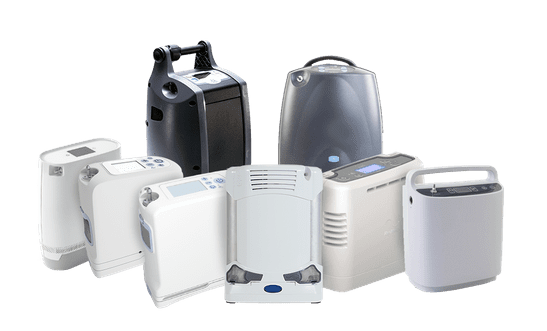
4. Weighting lifting
Lifting light weights can help you maintain strength so you are able to do everyday things, like reach a high shelf or carry a gallon of milk.
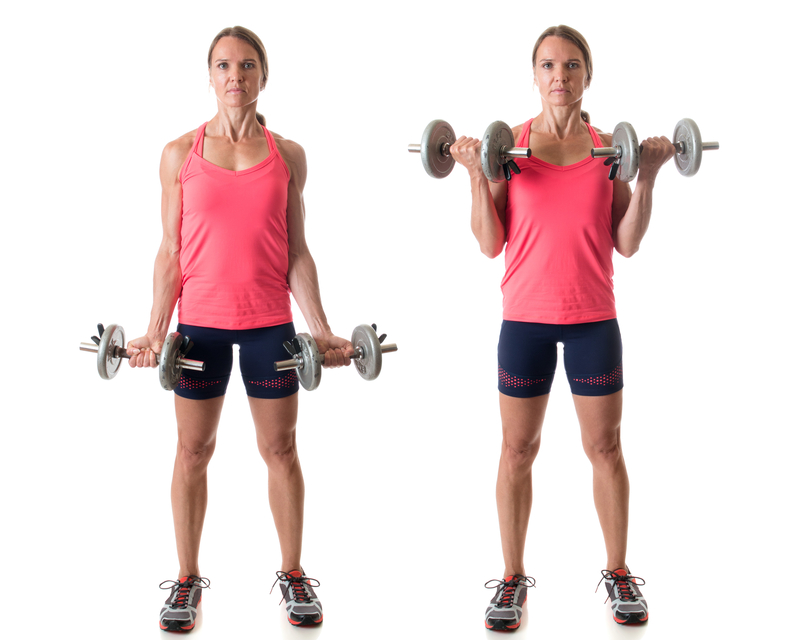
You can order cheap hand weights from amazon, stretchy bands, or just use water bottles or soup cans to try arm curls by following these simple steps:
- Hold the weights at your sides palms forward
- Breathe in
- Lift toward your chest
- Keep elbows down
- Exhale slowly
- Slowly lower your arms back down as you breathe in.
- Build up to two sets of 10-15 repetitions.
any exercise makes you short of breath, stop and sit down for a few minutes.
5. Avoid Oxygen Delivery Delays
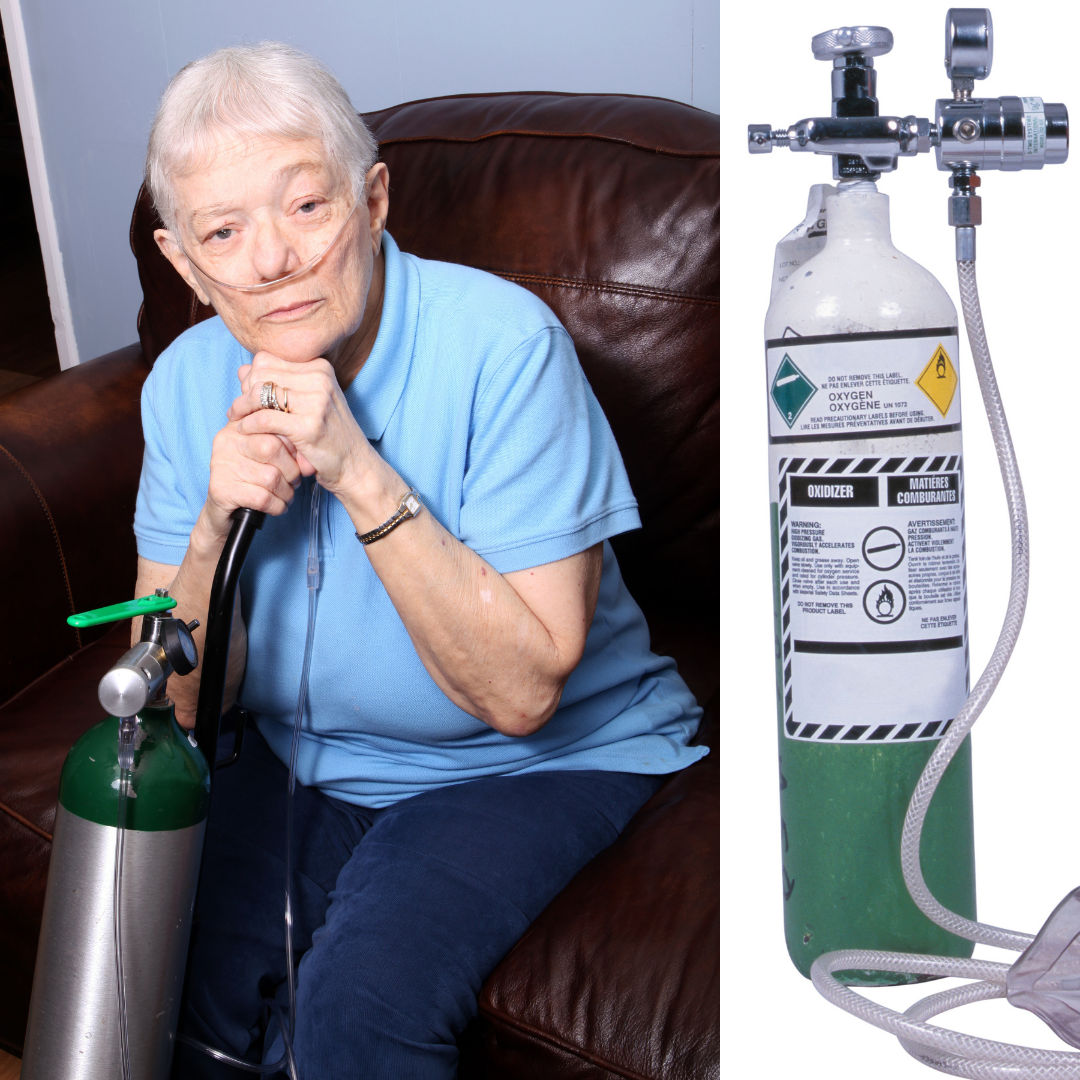
Getting your oxygen delivered as an oxygen patient is something that you always have to worry about. In the winter, be weary of delivery delays and other weather impacts in delivery services!
Keep an oxygen canister for emergencies on reserve for if your oxygen refill is delayed.
If you have a portable oxygen concentrator, you will not have to worry about getting your oxygen delivered. Instead you might have to worry about power outages.

Keep an extra oxygen concentrator battery or a charged battery on deck for bad storms where the power potentially goes out. An external battery charger would also be a helpful tool for these situations!
6. Meal Prep and Grocery Shopping
Eating and diet are very important aspects of your COPD treatment. Eating foods that don’t bloat or put more pressure on your lungs is crucial to combat exacerbations and other health related issues.
In the winter, you can meal prep for the week to avoid multiple grocery store trips, and also to maintain a healthy diet. Here are some helpful tips for winter dishes that will help you maintain a healthy weight throughout the winter:
Eat protein-rich foods
Eat high-protein, high quality foods, such as
- grass-fed meat
- pastured poultry & eggs
- fish — particularly oily fish such as salmon, mackerel, and sardines.

Complex carbohydrates
complex carbohydrates are your friend because these foods are also high in fiber. FIber helps improve the function of the digestive system and blood sugar management.
Make a chili or soup with some of the following ingredients:
- peas
- bran
- potatoes with skin
- lentils
- quinoa
- beans
- barley
- fresh produce
You can also do fresh fruits for breakfast but some are more suitable than others, here is a list of some good ones:
- Avocados
- Tomatoes
- Bananas
- Oranges
Vegetables are always a good option, they contain vitamins, minerals, and fiber. These nutrients will help to keep your body healthy, again some vegetables are better than others for people with lung conditions:
- Dark leafy greens
- Asparagus
- Beets
- Potatoes
A healthy diet won’t cure COPD, but eating right will help your body fight off infections, including chest infections that may lead to hospitalization. Avoiding the hospital in the winter and at all times of the year is always the goal. Eating healthfully will help you reach this goal and it will give you energy to exercise and improve your mood too.
7. Get a Face Mask For Keeping Cold Air Out of Your Lungs
![]()
Breathing in the cold air can irritate your lungs, restrict your airways, causing increased symptoms and in some cases exacerbations.
By covering your nose and mouth with a scarf and breathing in through your nose and out through your mouth you will warm the air before it reaches your airways.
A CT Mask is specifically designed for people living with COPD or asthma to help with breathing in cold air while outdoors.
8. Staying Warm Inside Safely

Keeping your home at a comfortable temperature is important, but if you have COPD or asthma, don’t use fireplaces. The wood can cause smoke build-up which can also aggravate your respiratory symptoms.
While you are indoors, the air humidity should be around 40%. If you live in a particularly dry area, you can reach this humidity with a humidifier.
9. Avoid Infections
.jpg)
To reduce your chances of visiting the hospital this winter, avoid infections. You can do this by washing your hands often and thoroughly. And to make sure you stay up-to-date on recommended vaccinations, especially for the flu and pneumonia.
The Cleveland Clinic also recommends that you:
- stay hydrated
- practice good hygiene
- keep your home sanitized
- avoid crowded places and people who are sick to reduce your risk of getting an infection
- If you do get a cold or the flu, it’s important to treat it as soon as possible.
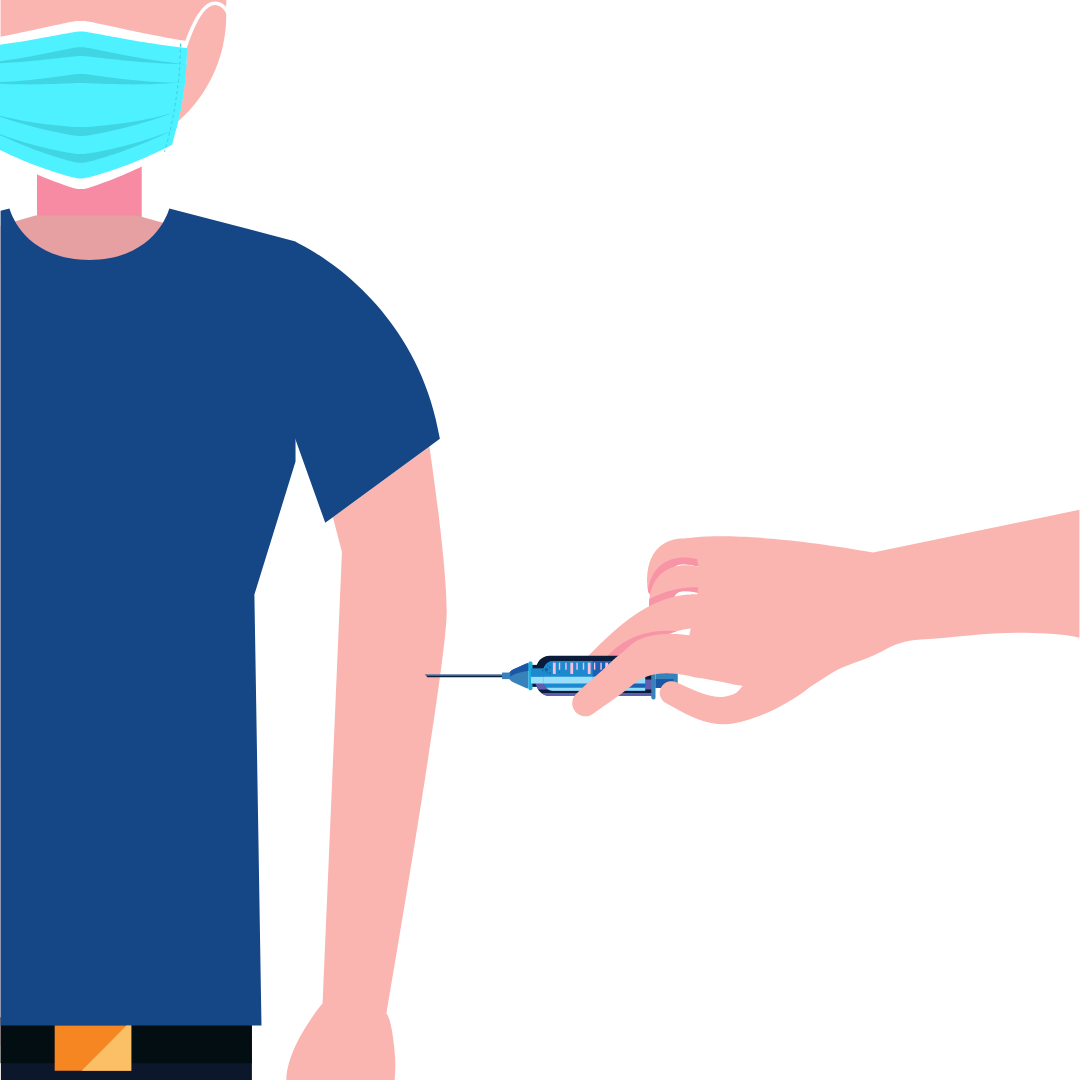
There are also outbreaks of flu in periods of cold weather, so protect yourself against infections and take advantage of the free flu vaccine you are entitled to!
Overview
{{cta('43b79c5e-6bd6-4f02-ac27-2d038d20c146','justifycenter')}}
By following these steps, you will have a better chance of staying healthy over the cold winter months.
These tips and tricks can take some getting used to but once you are able to nail down a winter routine and execute your COPD treatment effectively in the winter and only takes a little bit of patience after that for spring to roll around again!
If you are shopping for a portable oxygen concentrator, us here at LPT Medical are here to help! We have an inventory of pulse flow and continuous flow devices, all of which are top on the line and reliable devices that will get you through any season!
We also have oxygen accessories that we sell separately so if you need an extra battery, external battery chargers, tubing we got you covered!

Just call us anytime at 1(800)-946-1201

Many people with respiratory diseases COPD and Cystic Fibrosis have to deal with extra phlegm and congestion in their lungs and airways. It's an unfortunate symptom that can be difficult to manage, especially during periods of illness and exacerbations.
The reason for the excess mucus is inflammation in the respiratory tract caused by the disease. This kicks your mucus membranes into overdrive in an attempt to lubricate and soothe the lungs and airways, but it often leads to way too much extra mucus that is difficult to clear out.
Another cause of congestion in people with COPD is damaged lung tissue, which is not nearly as good at moving mucus up and out of your chest as healthy lungs are. When you pair that with decreased lung function and restricted airways, it can be nearly impossible to force out phlegm without some extra help.
For someone with COPD, excess mucus is particularly difficult to deal with because of common symptoms like chest tightness and airway restriction. When there's extra mucus and phlegm hanging around in the respiratory tract, it is especially difficult and uncomfortable for someone with COPD to breathe and cough controllably.
Fortunately, there are many different techniques and medications that can clear up congestion for people with a respiratory disease. That's why in this article we are going to teach you 16 effective methods respiratory patients can use to loosen and expel excess mucus.
It's important to note that if you suffer from any respiratory disease, not just COPD, and have trouble dealing with mucus, these tips will work for you.
{{cta('b59df0c1-c4de-47a8-8e1c-0d33d4b414aa','justifycenter')}}
Physical Techniques to Help Clear Mucus for COPD
1. Controlled Deep Coughing

Coughing is the body's natural, instinctual way to get rid of chest congestion, and it's often surprisingly effective. When your COPD causes your airways to get clogged up with mucus, coughing is one of the first things you should try.
However, uncontrolled, frantic coughing is usually not the best way to clear mucus from your airways. That's why doctors have developed coughing techniques to help you control your coughing and make it even more effective, especially for COPD patients who have difficulty producing strong, productive coughs.
A “controlled deep cough” is a simple, heavy cough that you force from deep in your lungs. Start by sitting in a comfortable place, leaning forward slightly, taking a long, deep breath in.
Next, hold your breath for just a few seconds and then use your abdominal muscles to forcefully push the air out through your mouth. You can even cross your arms over your stomach and use gentle pressure on your abdomen to help expel the breath.
While practicing this technique, you might get the urge to clear your throat or begin coughing reflexively, but do your best to ignore the impulse. Instead, take a few normal breaths, and then try another deep, controlled cough.
This method is more comfortable, and more effective, than a hacking, uncontrolled cough.
2. Controlled Huff Coughing
Another form of controlled coughing, huff coughing, is a gentle and effective way to clear phlegm out of your airways. It's also known as the forced expiration technique and it works because it keeps the throat open and effectively moves mucus out of the lungs.
There are 5 simple steps to performing a huff cough:
-
Start by sitting upright in a comfortable seat and lift your chin slightly.
-
Empty your lungs by exhaling slowly and completely for several seconds.
-
Next, take a slow, deep breath in, using your diaphragm (belly breaths).
-
Hold your breath for 2-3 seconds, then force the air out through your mouth in three rapid huffs, taking care to keep your throat open
- Repeat the technique, but take a slightly smaller breath this time. You can repeat the huff coughing technique as needed, alternating between small and large breaths.
Successful huff coughing usually requires about 3-5 repetitions with at least 5-10 normal breaths in between. A respiratory therapist or doctor can help you perfect the proper huffing technique, and remember to stop huffing if you begin to feel pain or exhaustion.
{{cta('fa8abc2a-1e88-4fa3-82fd-1cb5b9ed43b2','justifycenter')}}
3. Chest Percussions

Chest percussion is a type of chest physical therapy that essentially involves tapping or clapping on your chest with your hand. This physically loosens and breaks down mucus that is stuck in your airways, making it easier to cough up out of your lungs.
The proper technique is to sit while leaning back and use a cupped hand to deliver very firm, but gentle claps to the upper-left and upper-right part of your chest (in the space between your collarbone and nipple). You will want to start by tapping the left side of your chest for 2-3 minutes, and then repeat the percussions on the right side for another 2-3 minutes.
You should feel the mucus loosening in your chest as you perform the percussions and feel the urge to cough immediately after. Allow yourself to cough up as much mucus as you can in-between percussions until you've cleared all the excess phlegm from your chest.
Percussions should always be firm, but not painful, and done in a steady rhythm. Always make sure to position your hands in the correct place before performing any kind of percussion.
Do NOT perform percussions on any of these areas:
- Avoid the stomach
- Avoid the breastbone
- Avoid the spine
- Avoid the lower ribs and lower back (to prevent injuring organs)
4. Back Percussions

Back percussions usually require you to have a caregiver or respiratory therapist there to help out. They are very similar to chest percussions, but you lean forward and have someone else tap key spots on your back instead of your chest.
Start in a leaning-forward position, by holding a pillow to your chest and bending forward at the waist. Then have your therapist or caregiver tap gently but firmly on your back with a cupped hand, in the space right above your shoulder blade.
Tap for 2-3 minutes in that spot, then repeat again above your right shoulder blade. The mucus in your chest should loosen, allowing you to cough and expel it from your lungs.
5. Vibration

Vibration is another form of chest physiotherapy that is often done in combination with chest and back percussions. You can perform vibration therapy on the same areas that you do percussions on: both sides of the upper chest and back.
To do manual vibrations, simply place both hands, flat and palm-side down, on the target area. Then, using gentle pressure with the heels of both hands, tense your hands and wrists and shake them in a vibration-like motion. The patient should exhale slowly as you perform the vibration.
COPD patients will most likely need a caregiver or respiratory therapist to help perform vibrations, but there is special equipment available that allows patients do it on their own. There's an inflatable vest called a high-frequency chest wall oscillator that uses air pressure to deliver high frequency vibrations to the chest and back.
You usually use a high-frequency chest wall oscillator for about five minutes at a time with breaks to allow you to cough and clear out the loosened mucus between sessions. Chest wall oscillator devices are surprisingly non-bulky and streamlined, and there are several different versions on the market, including the Vest Airway Clearance System and the SmartVest.
6. Positioning to Promote Drainage

Another form of chest physiotherapy, postural drainage, is about placing your body in different poses or positions to help mucus drain downward out of your lungs. The unique positions encourage different lobes, or sections, of your lung to drain out until you can cough up or spit out the phlegm.
Positional drainage is often much more effective when you use it in combination with chest percussions and vibrations. It works best if a caregiver or respiratory therapist helps by performing the vibrations while the patient relaxes in a postural drainage position and exhales slowly.
Here are a couple of common postural drainage positions (although there are still many others!):
-
Draining mucus from the back of the lungs: In this position, you lie on your stomach and place pillows under your hips (usually three pillows are recommended) to raise your lower back and a small pillow under your head for comfort. Place your arms above your head and breathe deep from your belly.
- Draining mucus from the sides of your lungs: To drain the sides of your lungs, lie on one side and place a few pillows under your hip and a small pillow under your head. Stay in this position for 5 or 10 minutes, breathing deep from your belly for the duration.
The gravity along with the percussions and vibrations should effectively move the mucus out of your lungs, into your larger airways, and to your mouth where you can expel the excess sputum.
{{cta('43b79c5e-6bd6-4f02-ac27-2d038d20c146','justifycenter')}}
A Last Word on Chest Physiotherapy
Most chest physical therapy sessions last somewhere between 20-40 minutes, and include alternating a variety of techniques including positional drainage, vibration, percussion, deep coughing, and huff coughing. You can do multiple sessions per day if needed, in fact doctors usually encourage COPD patients with excess mucus to do chest physiotherapy once in the morning and once before bed.
As you should before starting any kind of new therapy, make sure you talk to your doctor before starting or changing your chest physiotherapy regimen. Your doctor will be able to give you the best advice for how, when, and how often you should do it.
7. Active Cycle of Breathing Technique (ACBT)

The Active Cycle of Breathing Technique, or ACBT, is a three-step method for clearing mucus from your airways that is often recommended to patients with COPD. Like some of the other techniques we've discussed so far, ACBT includes coughing techniques, but combines them with chest and breathing exercises for maximum effect.
Follow these three steps to perform the Active Cycle of Breathing Technique:
Step 1: Relaxed, Controlled Breathing
Breathing slowly and steadily can help relax your airways and make it easier to expel mucus. Even though it can be difficult when you are congested, you want to try not to wheeze or breathe heavily before attempting to cough up mucus with this method.
Start by sitting up in a comfortable position and relaxing your chest, shoulders, and abdominal muscles. Breathe gentle, regular breaths by inhaling through your nose and exhaling from your mouth.
You want to breathe very gently with your lower chest so your upper chest can relax. You should feel your stomach rise and fall as you breathe, and it can help to lay one of your hands on your stomach to feel your abdomen expand as you take each breath.
Practice this controlled, gentle breathing for at least six breaths before moving on the next step.
Step 2: Chest Expansion Exercises
Now that you've relaxed your chest and practiced even breathing, it's time to loosen up and expand your chest. Doing this is as simple as taking in a large, deep breath.
Once you've filled your lungs up with air, hold it in for a moment or two, and then exhale gently. Don't force the air out.
Step 3: Controlled Huff Coughing
Now that you've used breathing and chest exercises to relax and expand the muscles in your chest and around your lungs, it's time to clear out the phlegm with huff coughing. This time, you do want to use forced expiration to get the mucus out of your airways.
Continue controlled huff coughing until you've forced all of the excess mucus out of your lungs and chest. Refer to the section near the beginning on huff coughing for a more detailed guide on how to use the huff cough technique.
8. Autogenic Drainage
Autogenic drainage is often used as alternative to the active cycle of breathing technique. It has three main phases in which you loosen mucus up from the walls of your respiratory tract, move it up through your airways, and expel it by coughing.
Phase 1: Dislodging Mucus
In this step, you take a small breath through your nose into your lower chest and hold it for three seconds. Then, exhale gently with the same force as if you were sighing, prolonging the breath. Repeat several times.
Phase 2: Moving Mucus out of Small Airways
This time, you want to take a larger, slower breath into your upper chest. Hold it for three seconds, and exhale quickly, drawing it out to be longer than when you breathed in.
Phase 3: Expelling Phlegm Out of Chest and Airways
In this phase, you should feel the phlegm moving in your chest, giving you the urge to cough. First, take a large, deep breath in and hold it for three seconds. Then breathe out normally.
Continue taking long, deep inhales, holding your breath for a few moments, and then exhaling normally until you feel mucus in your upper chest and throat. Use huffing exhales to force the up the phlegm and cough it out.
Medications and Medical Equipment to Help Clear Mucus for COPD
9. Expectorants

Expectorants are common over-the-counter medications that help thin and loosen up mucus in your chest and make it easier to cough up. However, studies show that expectorants might not be as effective or useful for people who have COPD.
Expectorants seem to work best in patients who have chronic bronchitis, but even then the benefits aren't particularly impressive. Make sure you talk to your doctor before taking expectorants to treat your COPD symptoms, and be aware that it might not work.
Some of the more common over the counter expectorants include Mucinex and Robitussin DM.
10. Mucolytics

Mucolytics are a type of oral medication used to treat COPD patients with thick mucus and difficulty expelling it from the respiratory tract’s Much like expectorants, mucolytics cause mucus to become thinner and easier to clear out of airways.
Unlike expectorants, which are usually taken as needed, mucolytics are usually taken daily to prevent symptoms. Mucolytics seem to be more effective than expectorants for patients with COPD, and can even prevent and treat exacerbations.
Some examples of mucolytic drugs often prescribed to patients with COPD:
- Carbocisteine
- Erdosteine
- Mecysteine
11. Saline Nebulizer
Nebulizers are often used to dispense medication to patients with asthma and COPD, but the evidence is piling up that COPD patients can also benefit from using a nebulizer with a plain saline (salt water) solution.
One study found that a nebulized saline treatment was able to help 65% of COPD patient participants to more easily expel mucus from their airways. It even managed to reduced breathlessness in some COPD patients, too.
Using a saline nebulizer is considered very safe, but you should still talk to your doctor first before trying any kind of new medical treatment. You also need to make sure you use a medically approved, hypertonic saline solution.
12. Positive Expiratory Pressure Devices

Positive Expiratory Pressure (PEP) is a type of therapy that helps you push your breath through your smaller air passages and loosen up mucus there. A PEP device is essentially just a mouthpiece or face mask that provides resistance when you exhale into it.
The extra air pressure that this creates helps force thick, stubborn mucus out your airways and up to your mouth, where you can cough or spit up the sputum.
You can use a Positive Expiratory Pressure device in three simple steps:
- Seal your lips around the mouthpiece of your PEP device and take a deep breath.
- Now, forcefully exhale through the device for several seconds, drawing it out as long as possible.
- The pressure should give you urge to cough as it dislodges mucus in your airways. When you get the urge, take in another breath and practice deep or huff coughing to expel the mucus.
13. Lung Flute

The Lung Flute is similar to a PEP device, but it uses a reed attached to the mouthpiece to create a vibrating sensation. The vibrations the lung flute produces travel from your lips, down your airways, and to your lungs to help loosen up trapped mucus.
The Lung Flute creates pressure and loosens and breaks down mucus even in the deepest parts of your lungs, unlike other mucus clearing devices. COPD patients usually use their Lung Flute at least twice daily, but your doctor will help you develop a regimen that is right for you.
The Lung Flute is simple to use. Just follow these steps:
-
Sit in a comfortable position and put the lung flute to your lips, angling the flute slightly downward.
-
Take a deep breath in, seal your lips around the mouthpiece, and exhale very gently through your mouth. You will hear the reed attached to the mouthpiece fluttering as you blow out. (It might take some practice to move the reed correctly)
-
Remove the flute from your lips and take another deep breath, and repeat another exhale through the mouthpiece, making sure it flutters the reed.
- Put down the mouthpiece and take several normal breaths. Repeat steps as necessary, blowing through the reed in repetitions of two blows at a time. You should feel the mucus collecting in your upper airways a few minutes after your lung flute therapy session, at which point you should practice controlled coughing techniques to expel the phlegm.
Diet & Lifestyle Techniques to Help Clear Mucus for COPD
14. Drink Plenty of Water

If you don't drink enough fluids throughout the day your mucus gets thicker and more difficult to drain or expel. Thick, sticky mucus is difficult to cough up and tends to get stuck in your airways, making it more difficult to breathe.
That's why it's especially important for people with COPD to drink enough water. Keeping your body hydrated helps keep your mucus thin and fluid, which makes it much easier to clear out of your airways.
But staving off congestion is only one of many reasons to drink plenty of water. You're more likely to stay active and stress-free if you're hydrated, whereas dehydration can affect your mood and leave you feeling sluggish and fatigued.
15. Avoid Too Much Milk and Dairy

It is an often-repeated tale that drinking milk and eating dairy causes your body to produce extra mucus, but it turns out that's not exactly true. Studies do show, however, that milk and dairy cause the mucus in your airways to get thicker, which is probably how the myth originated.
If you avoid having too many dairy products in your diet, it can help keep your mucus thin and more manageable. As we've discussed, thinner mucus is better because it's easier to drain and cough up from your chest.
If you eat a lot of dairy products and also have trouble with thick mucus that's difficult to expel, you might want to reduce t


 So we can find the best portable oxygen concentrator for your needs!
So we can find the best portable oxygen concentrator for your needs!














